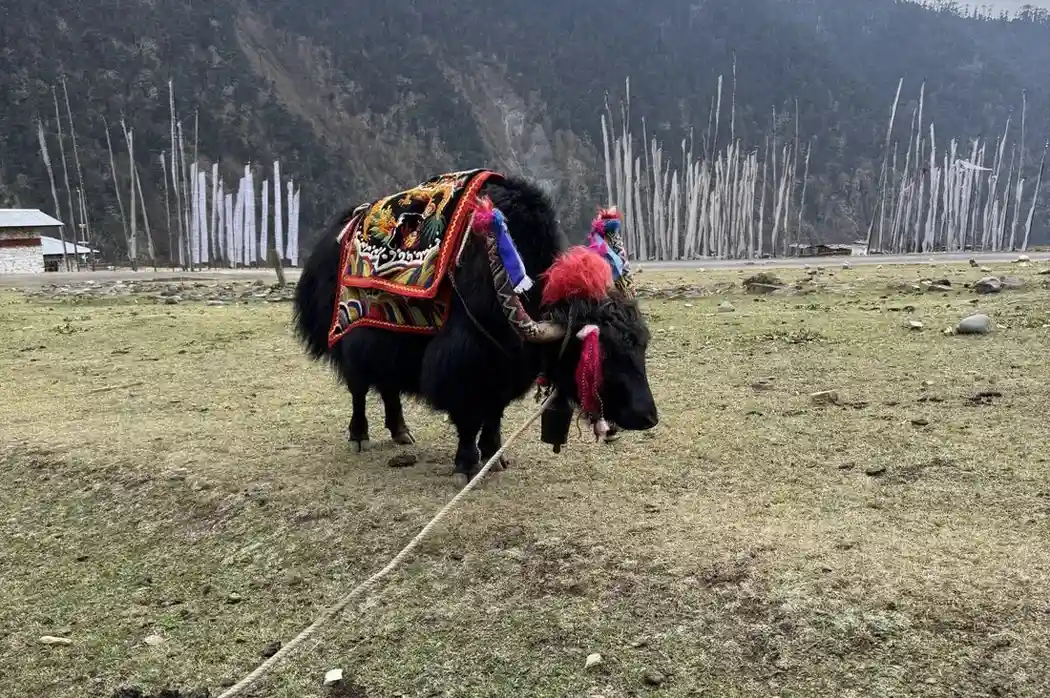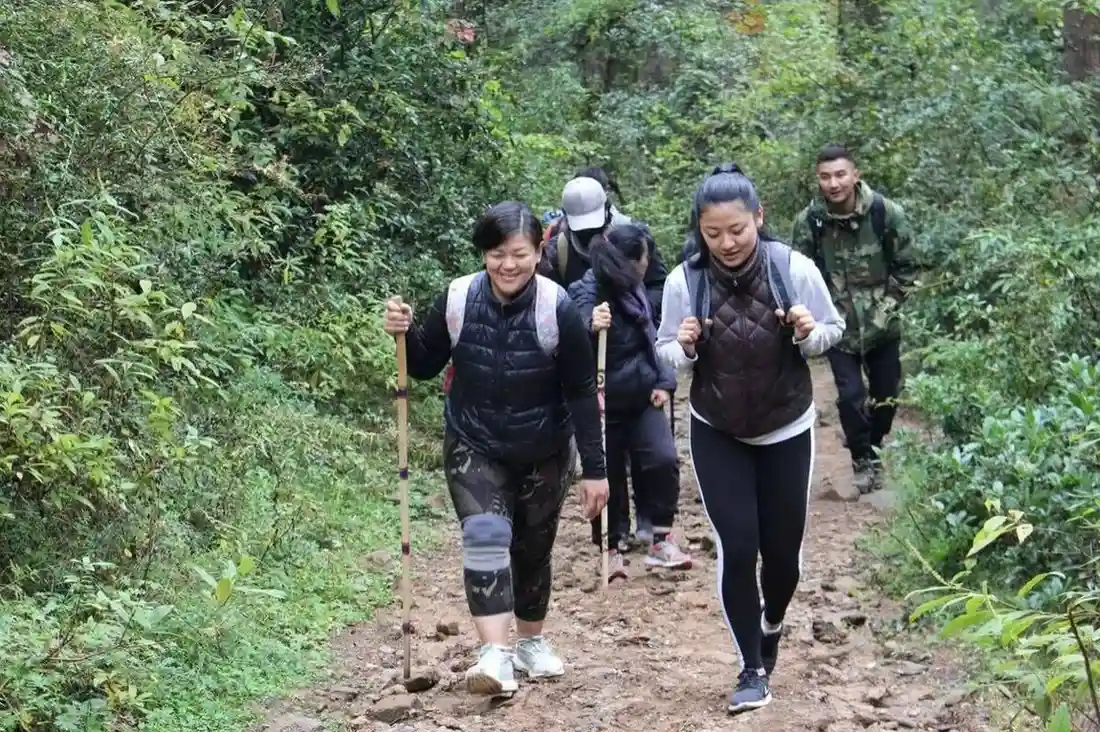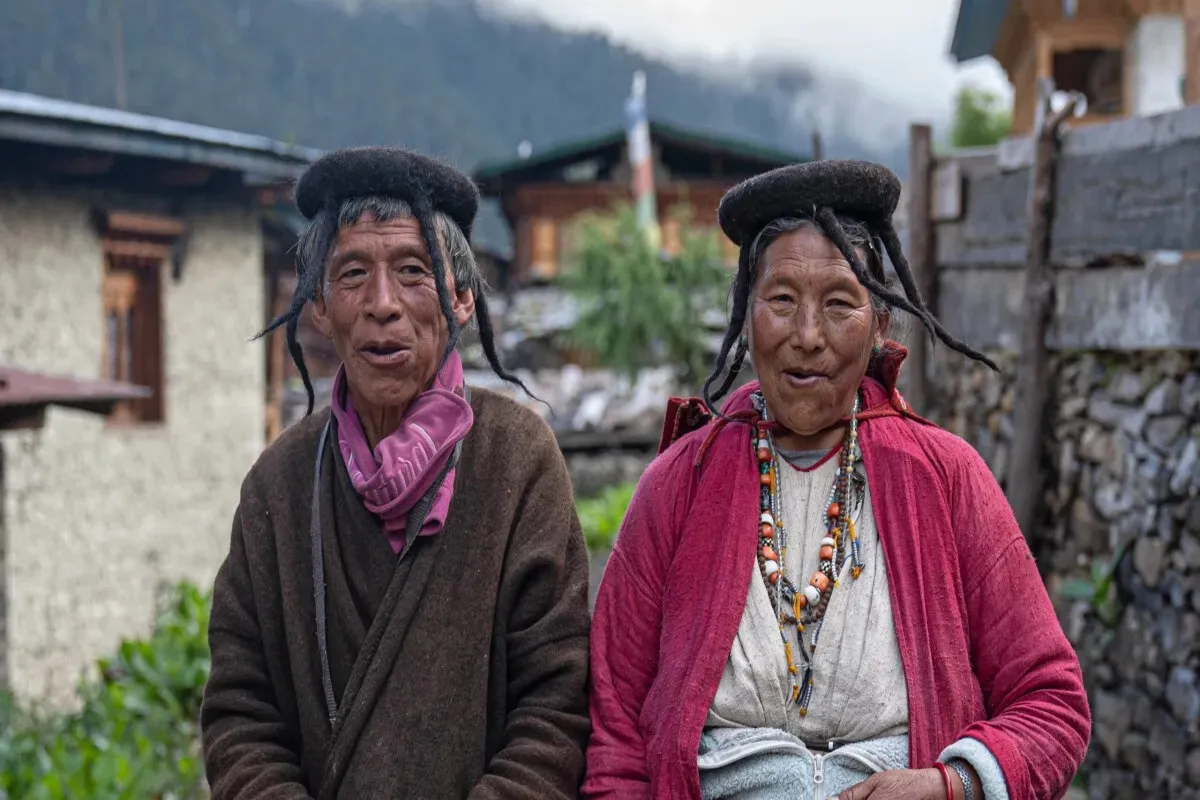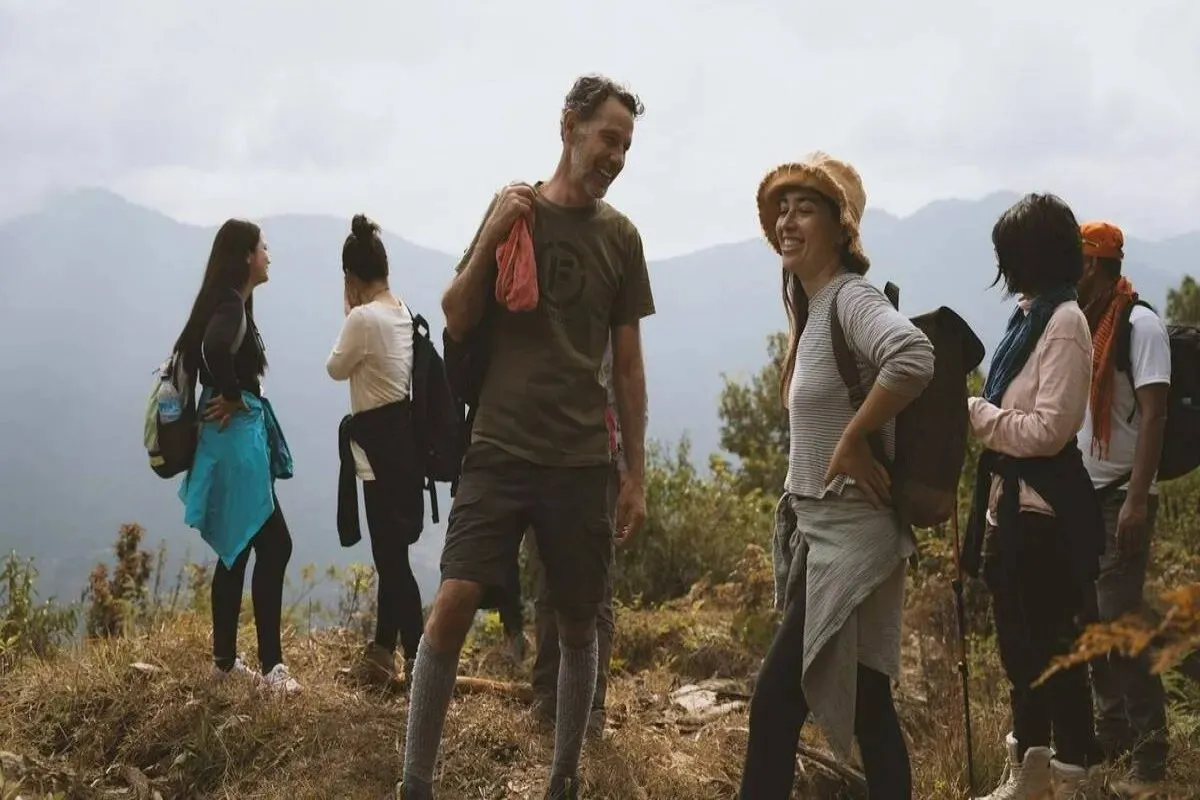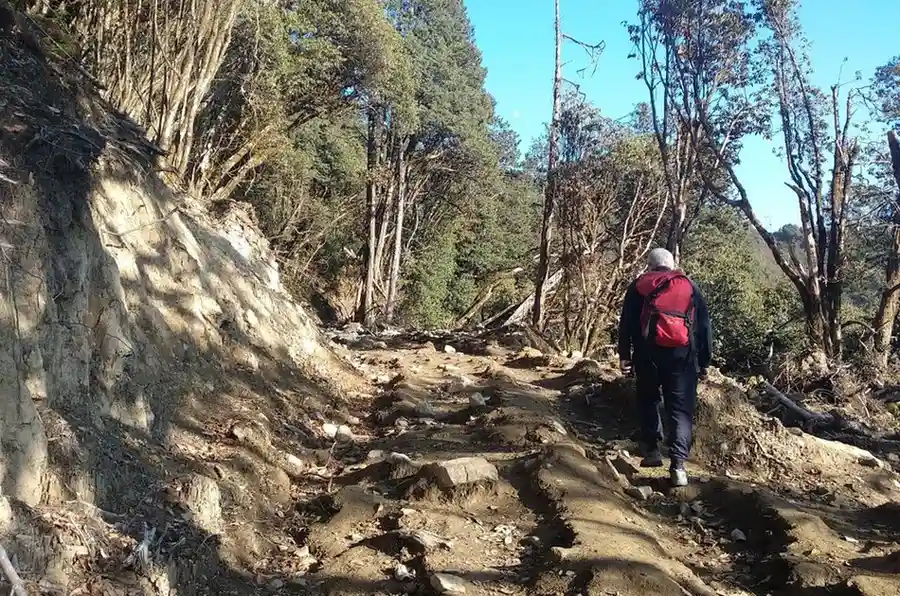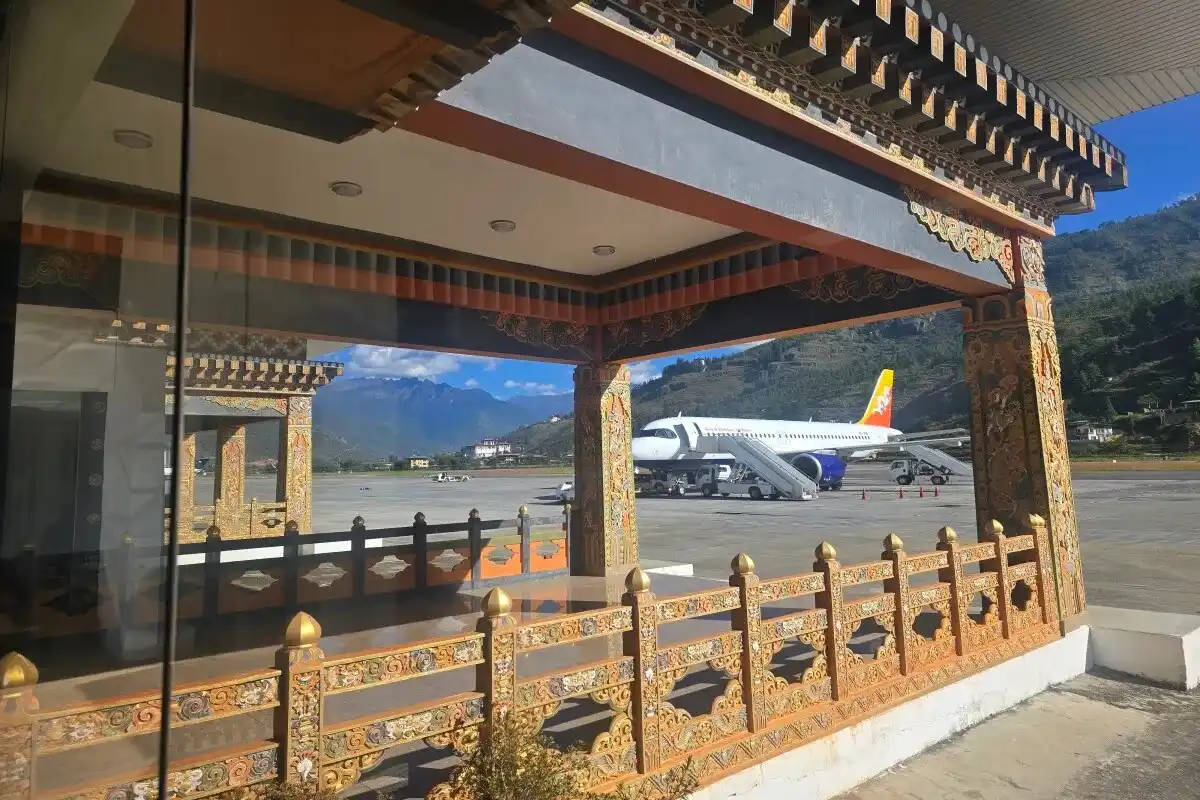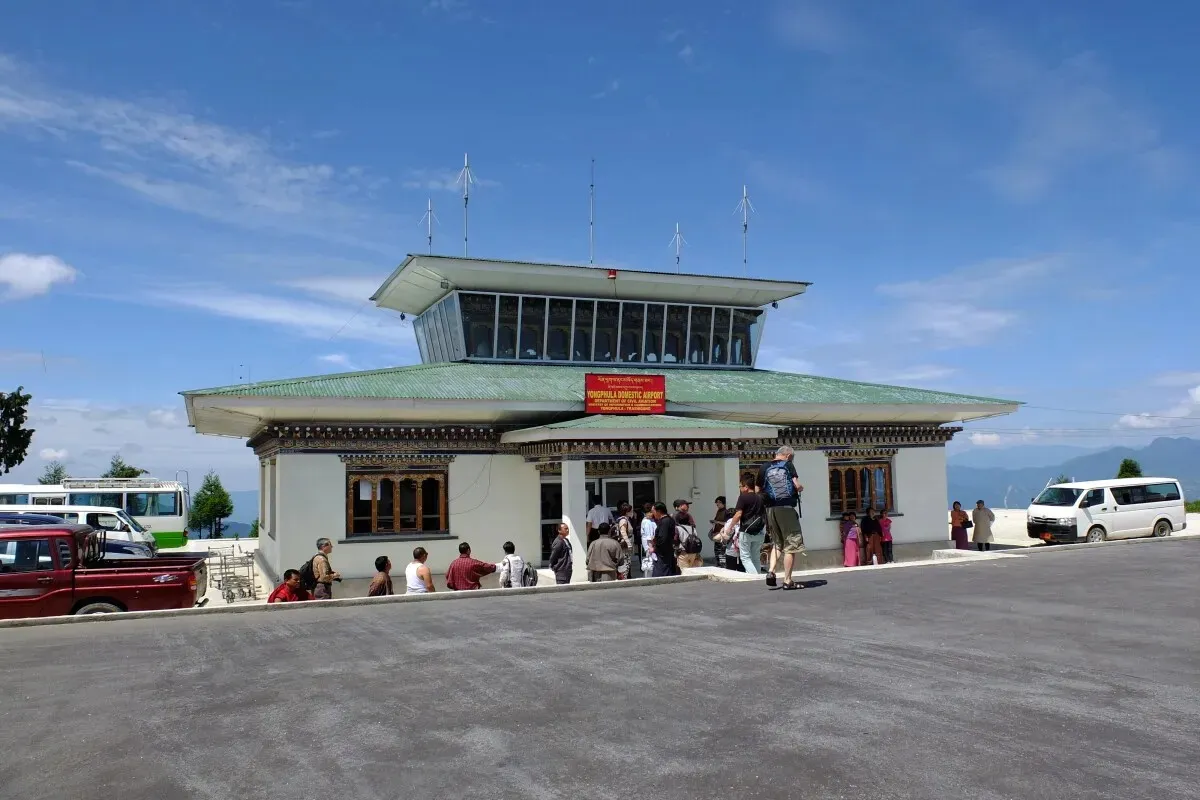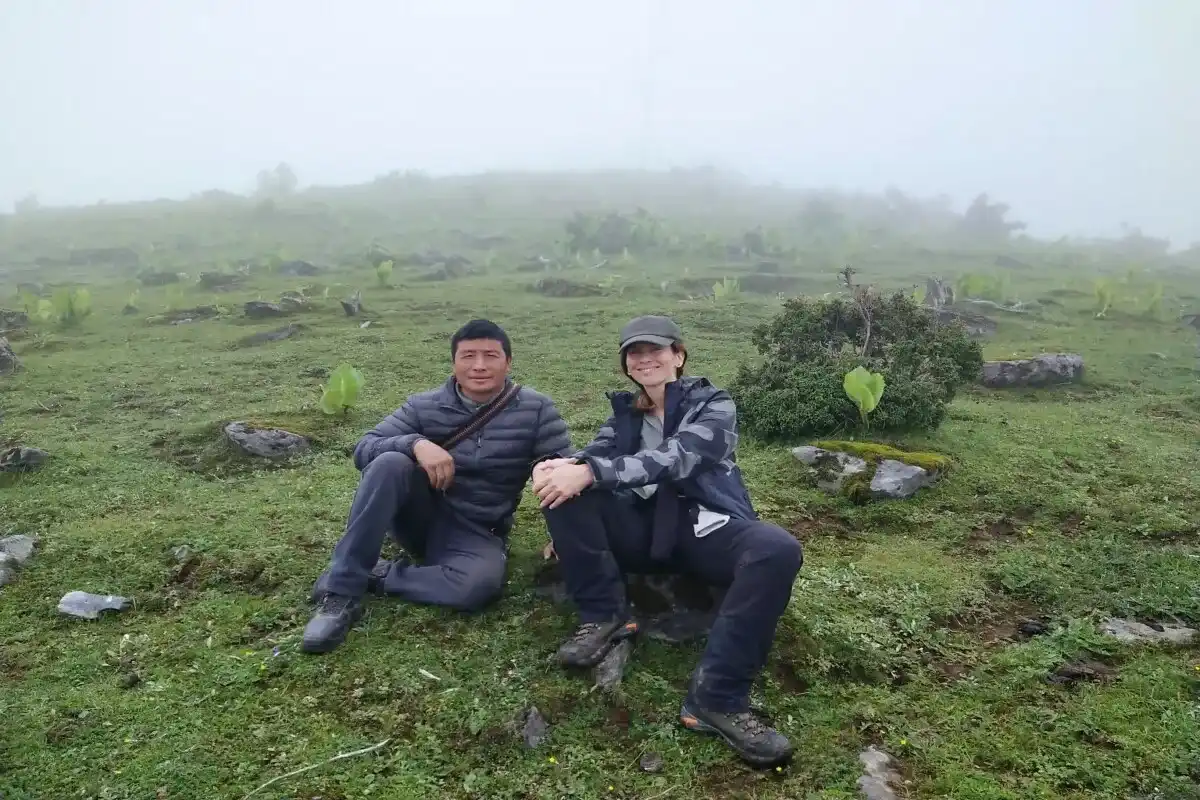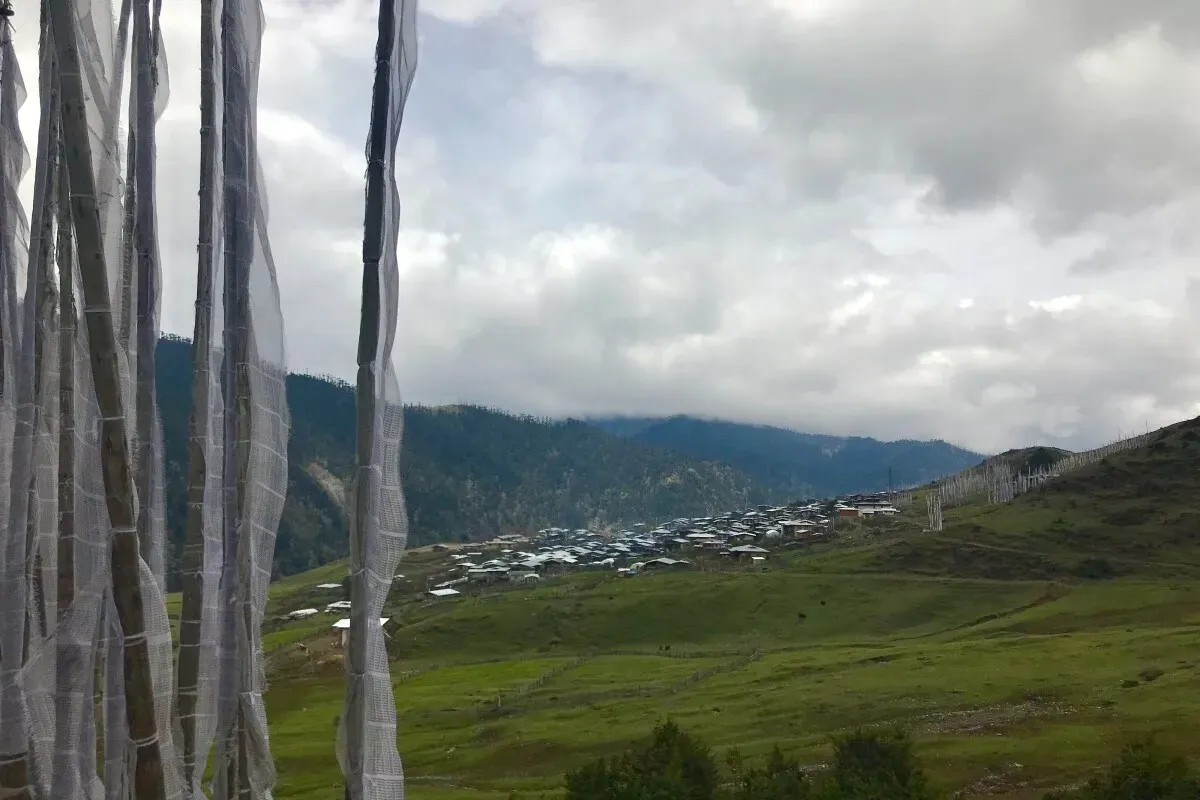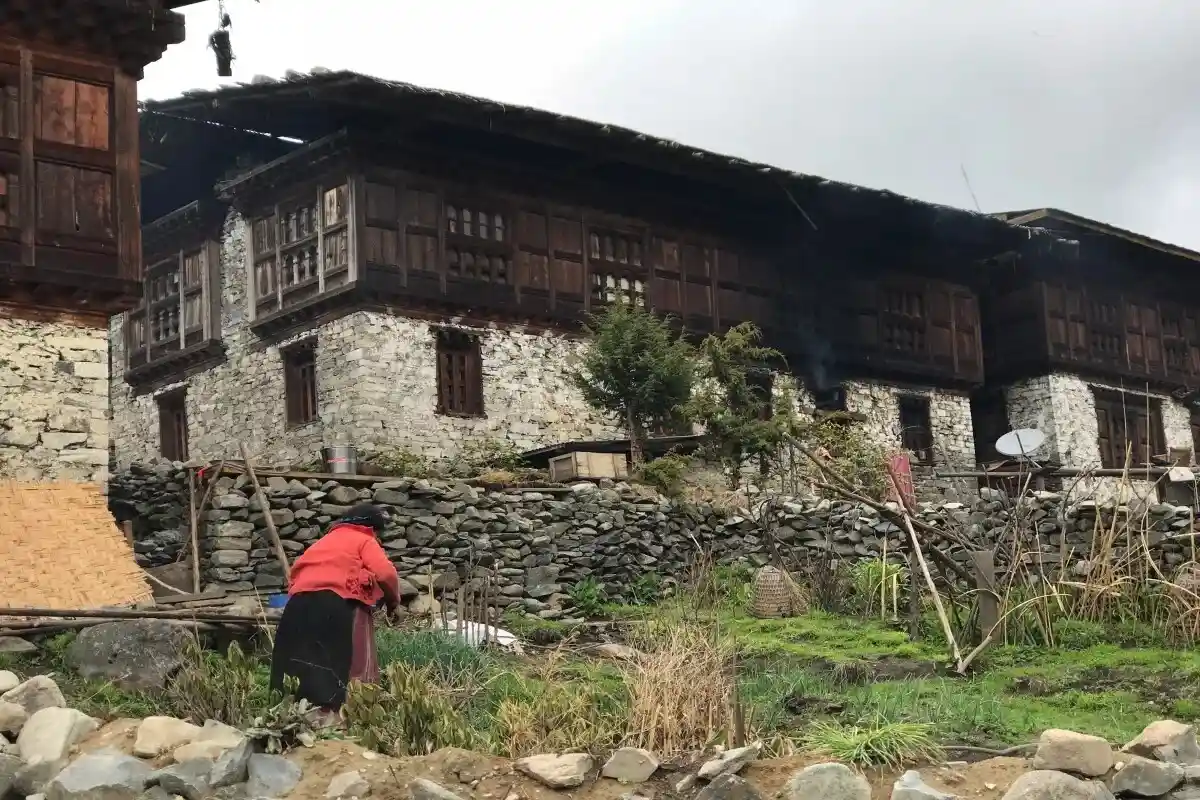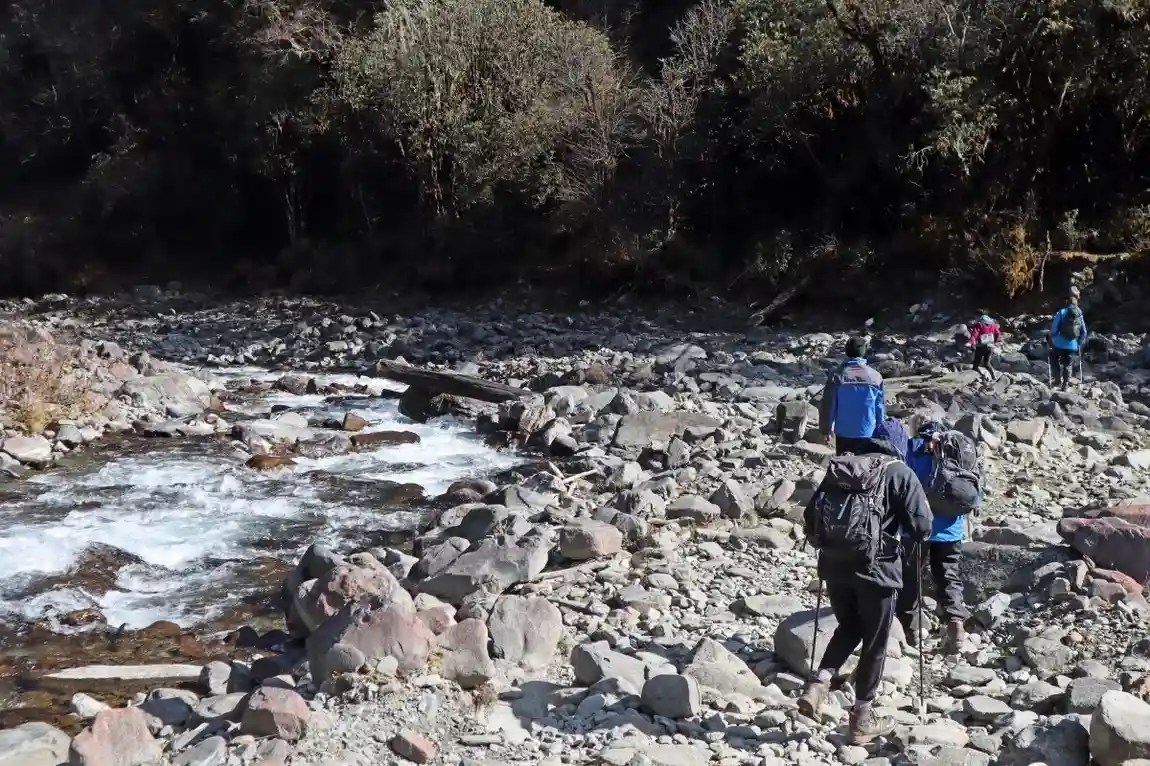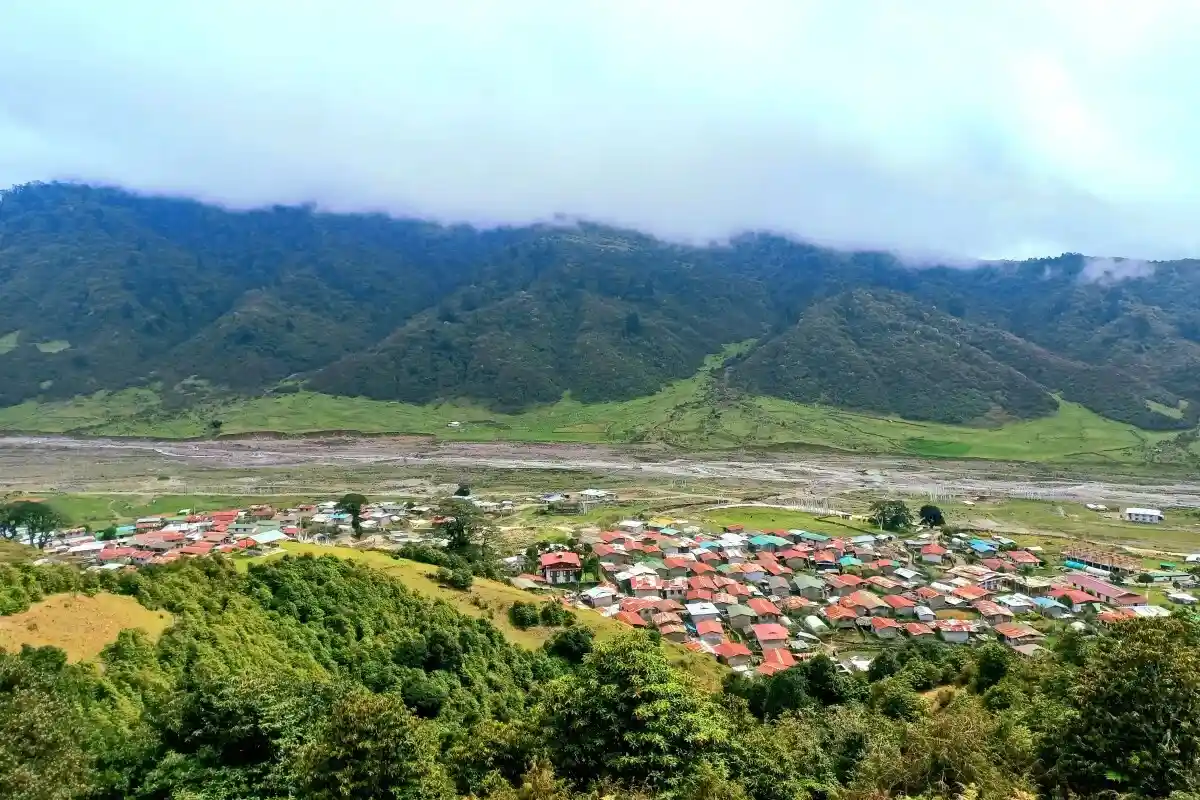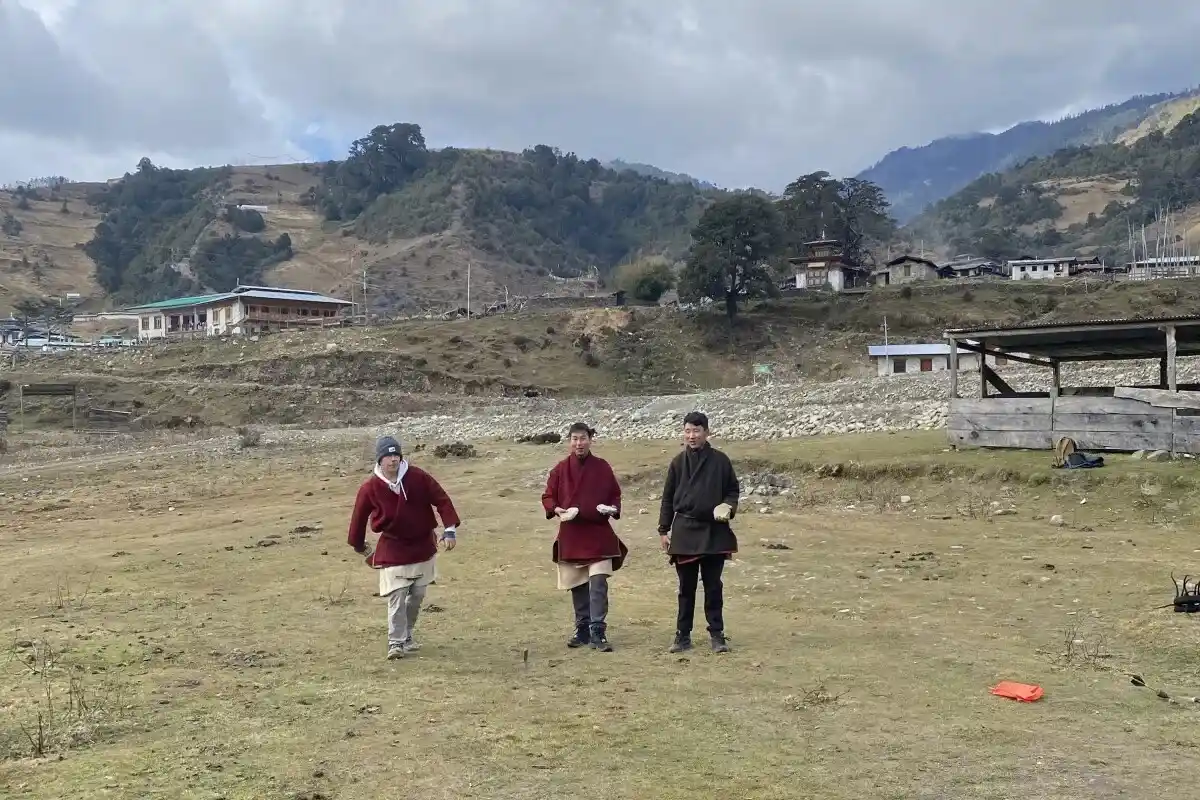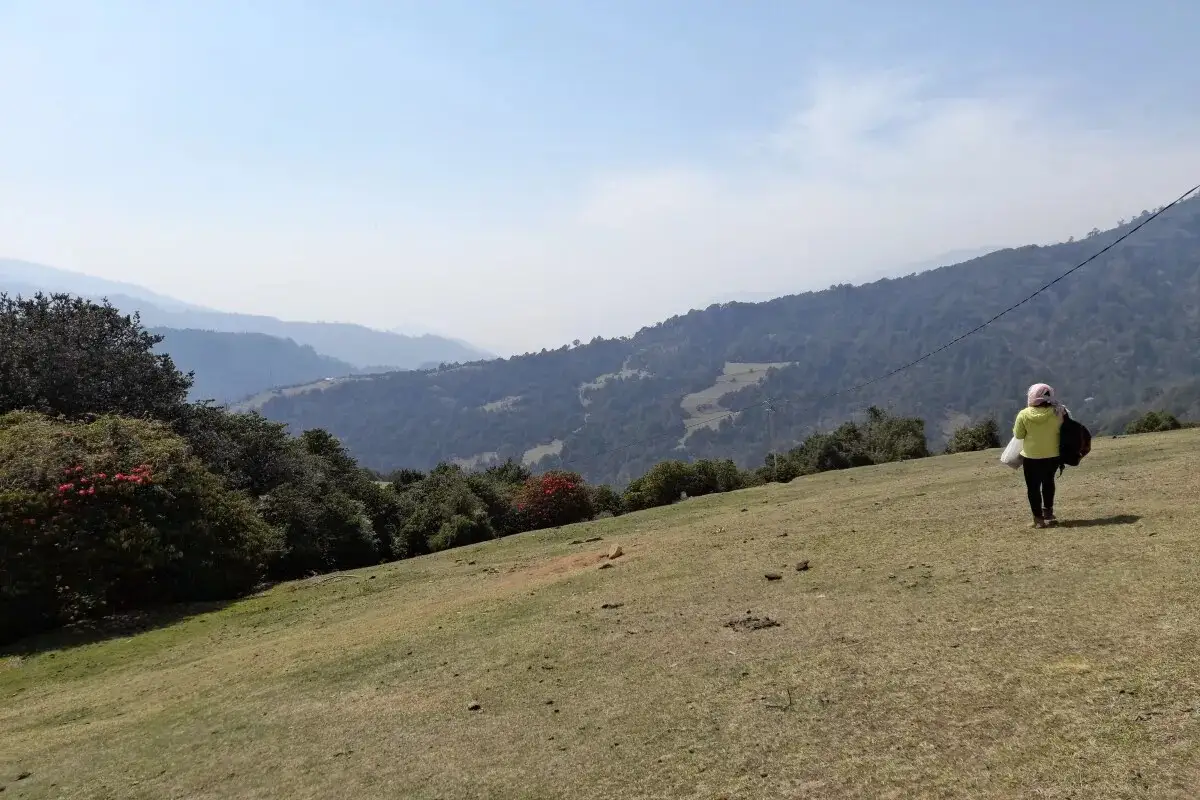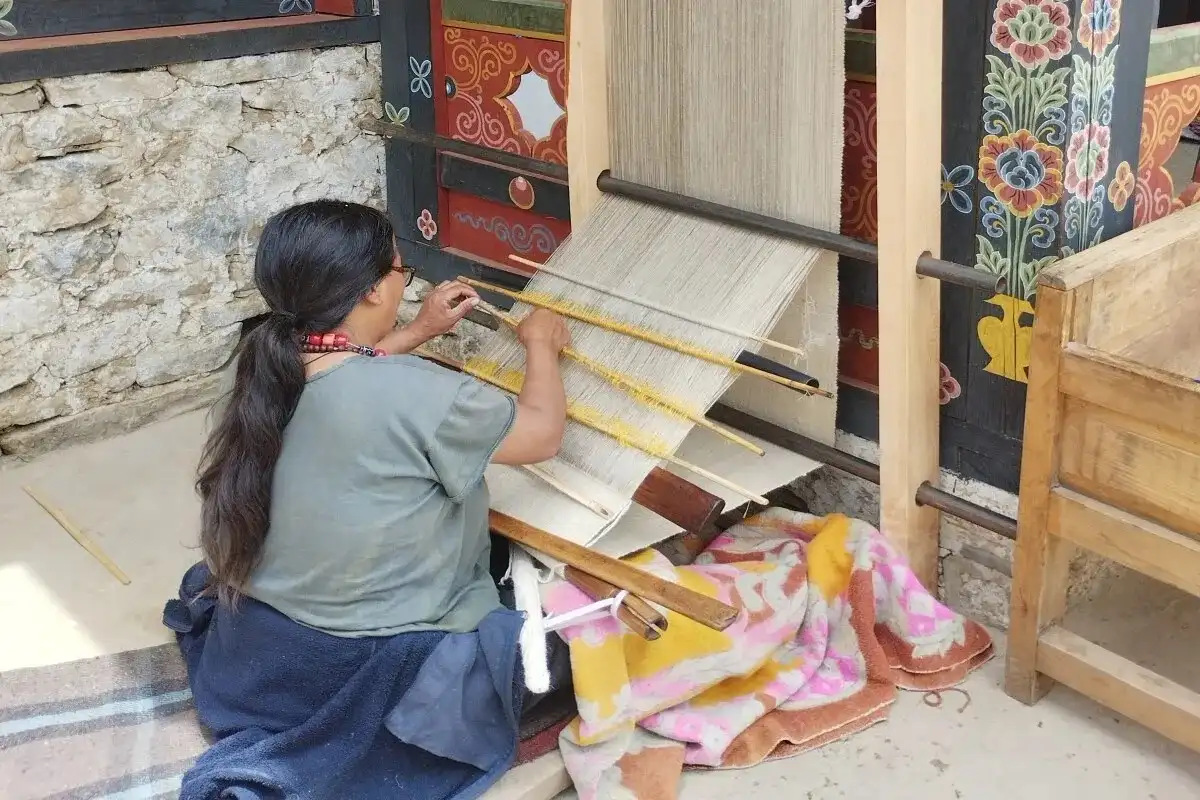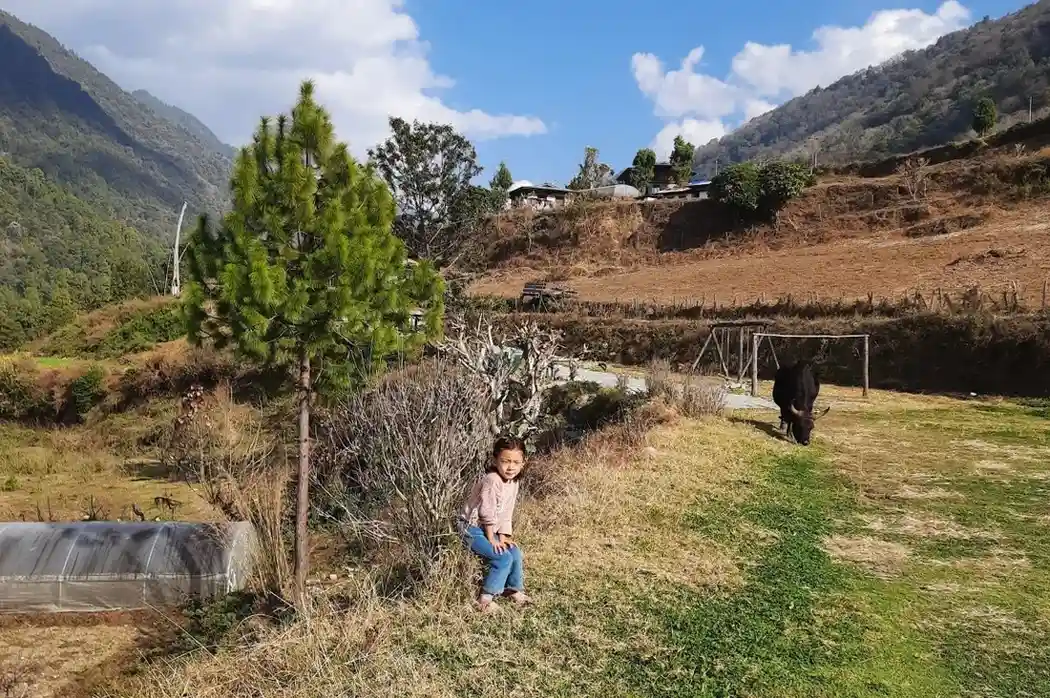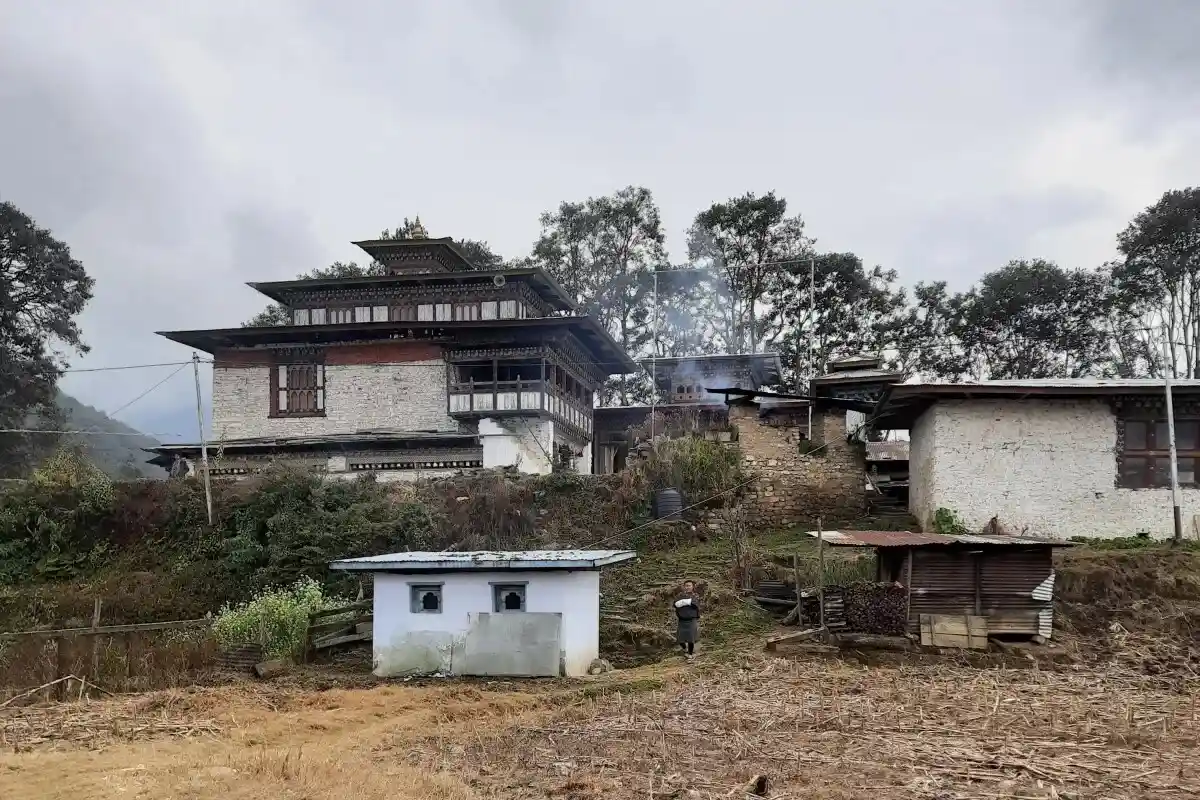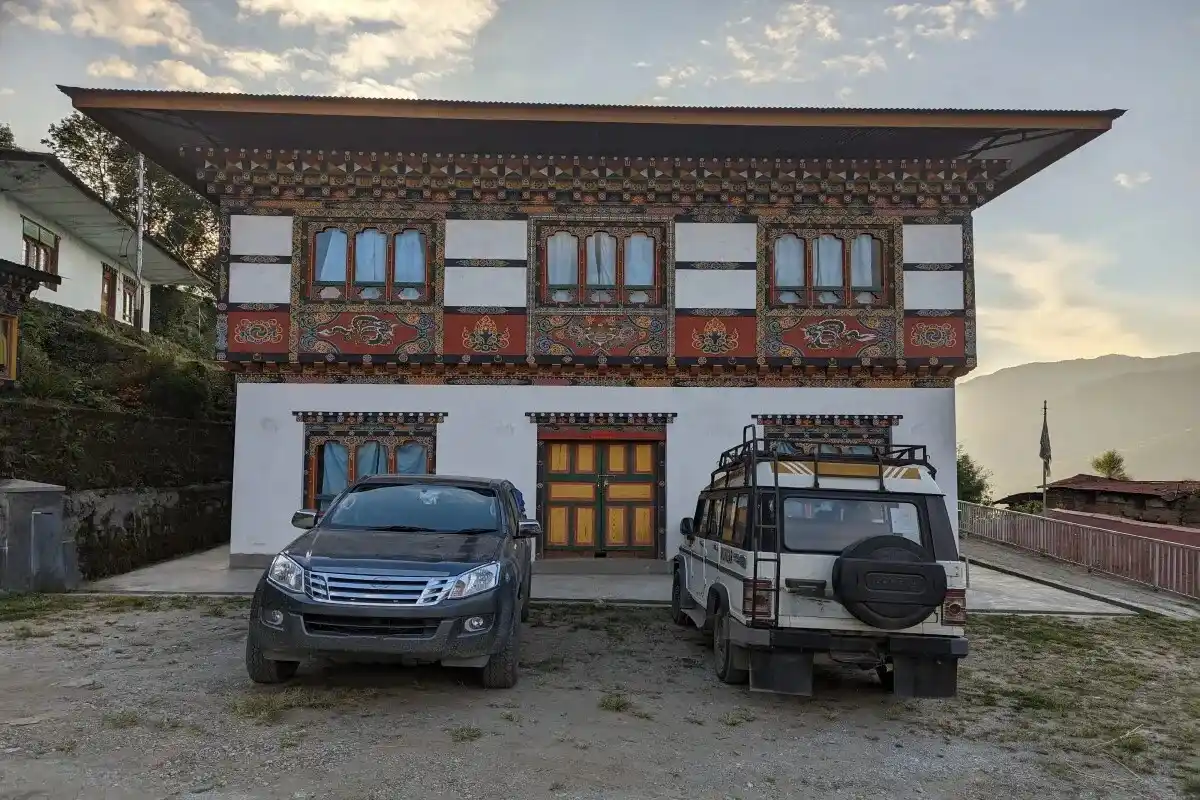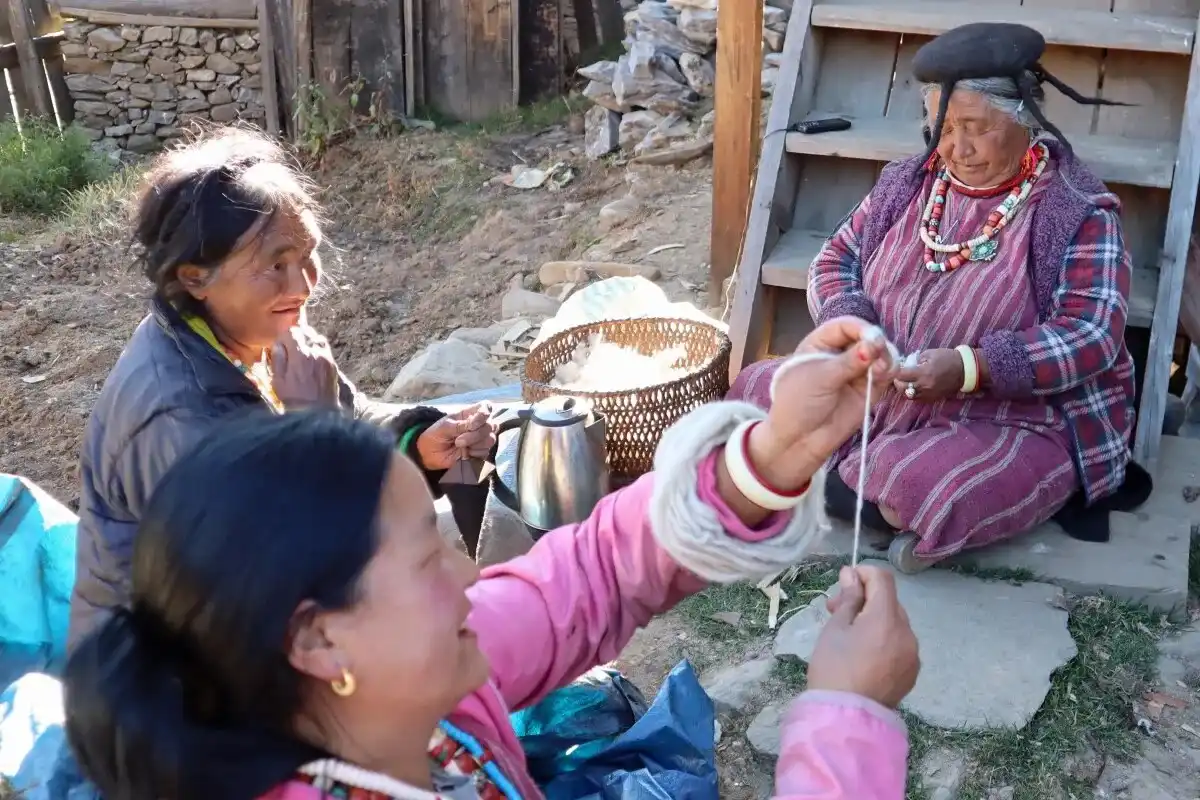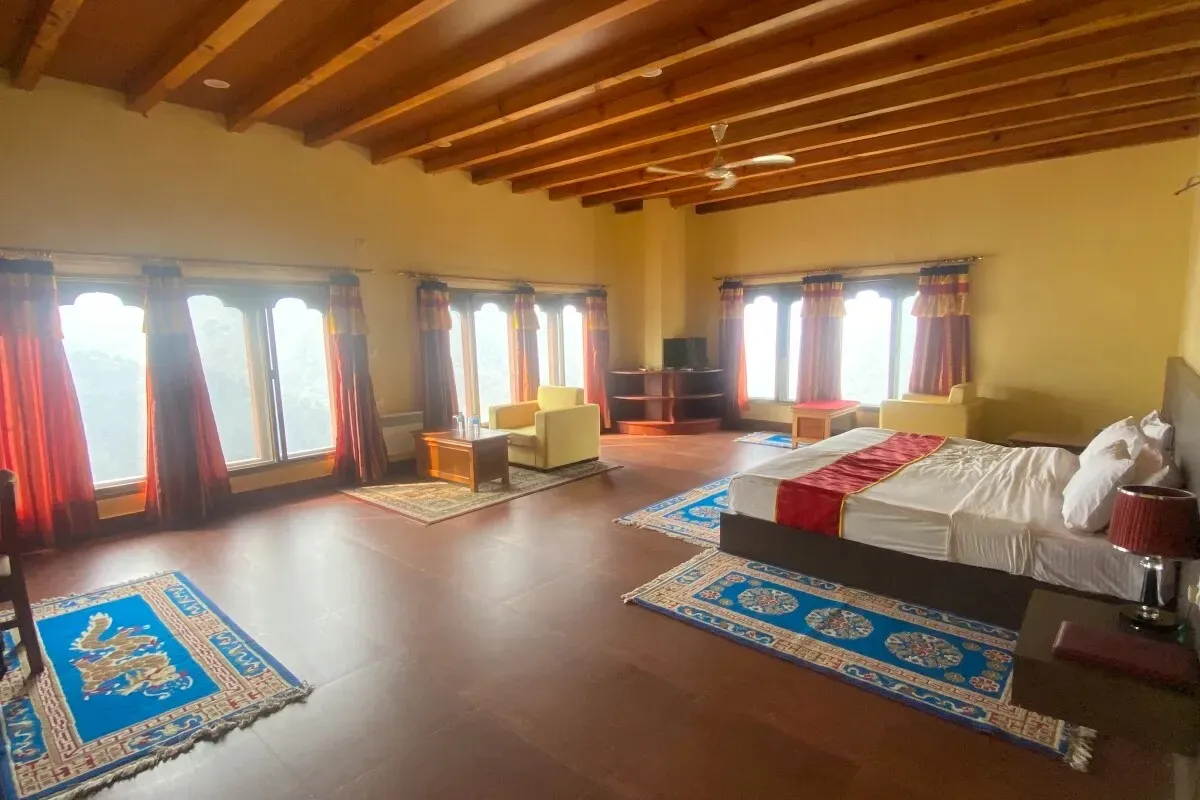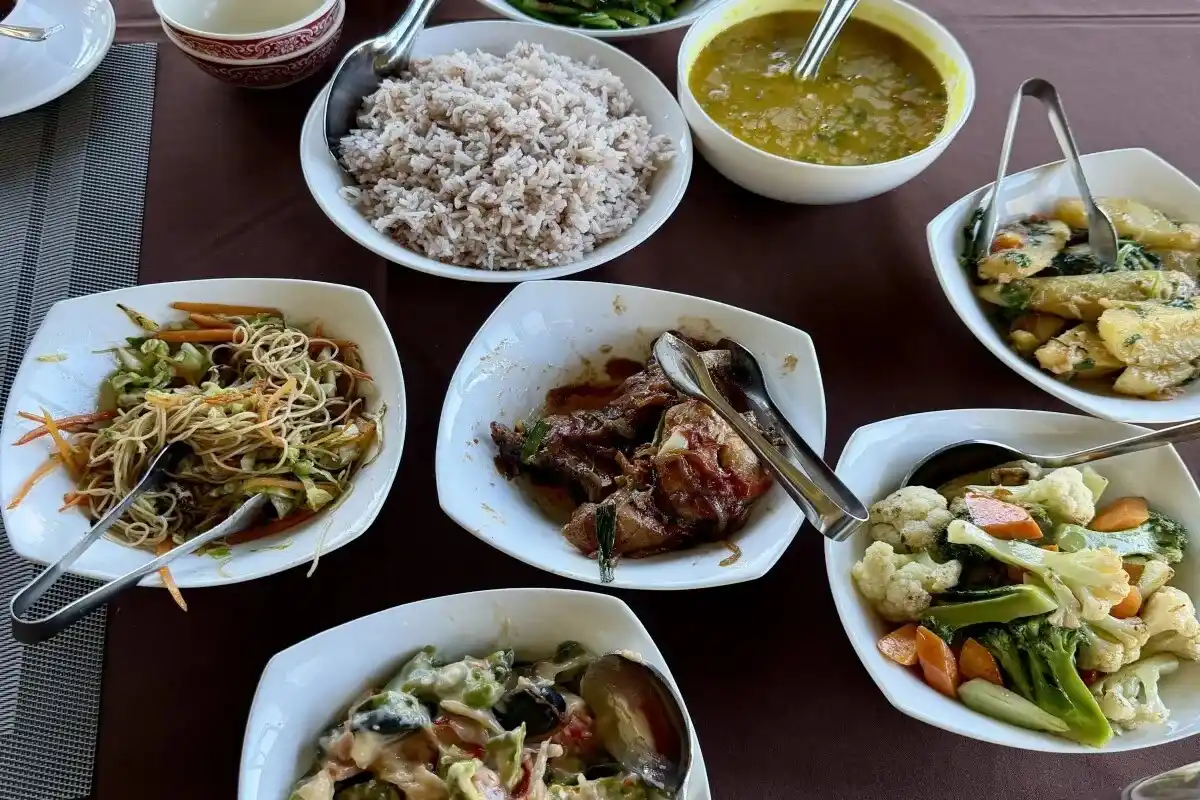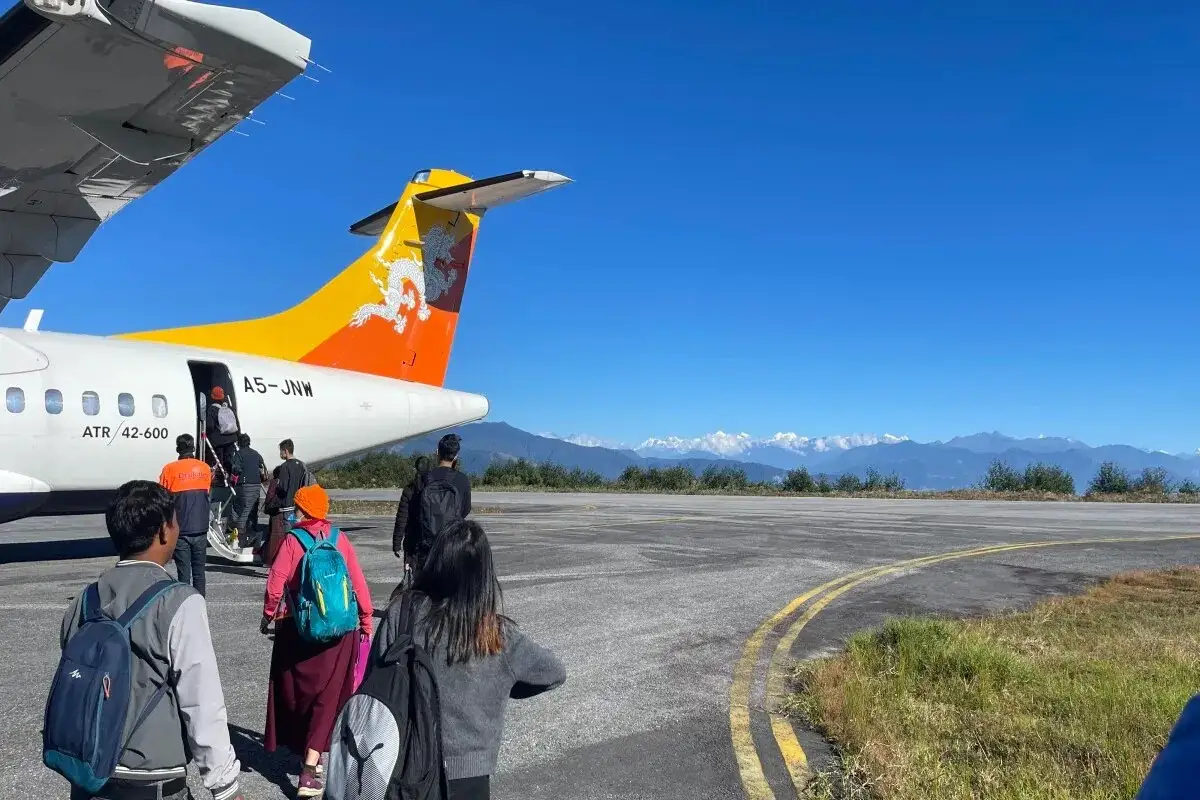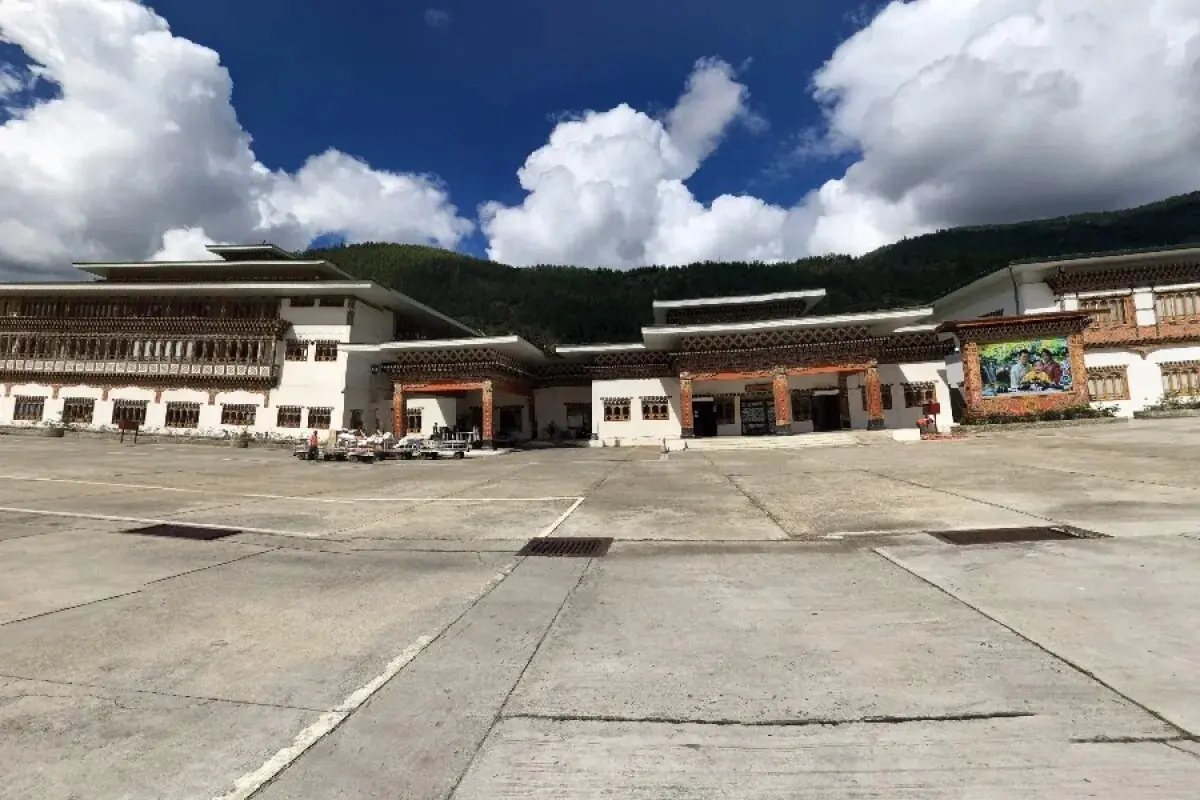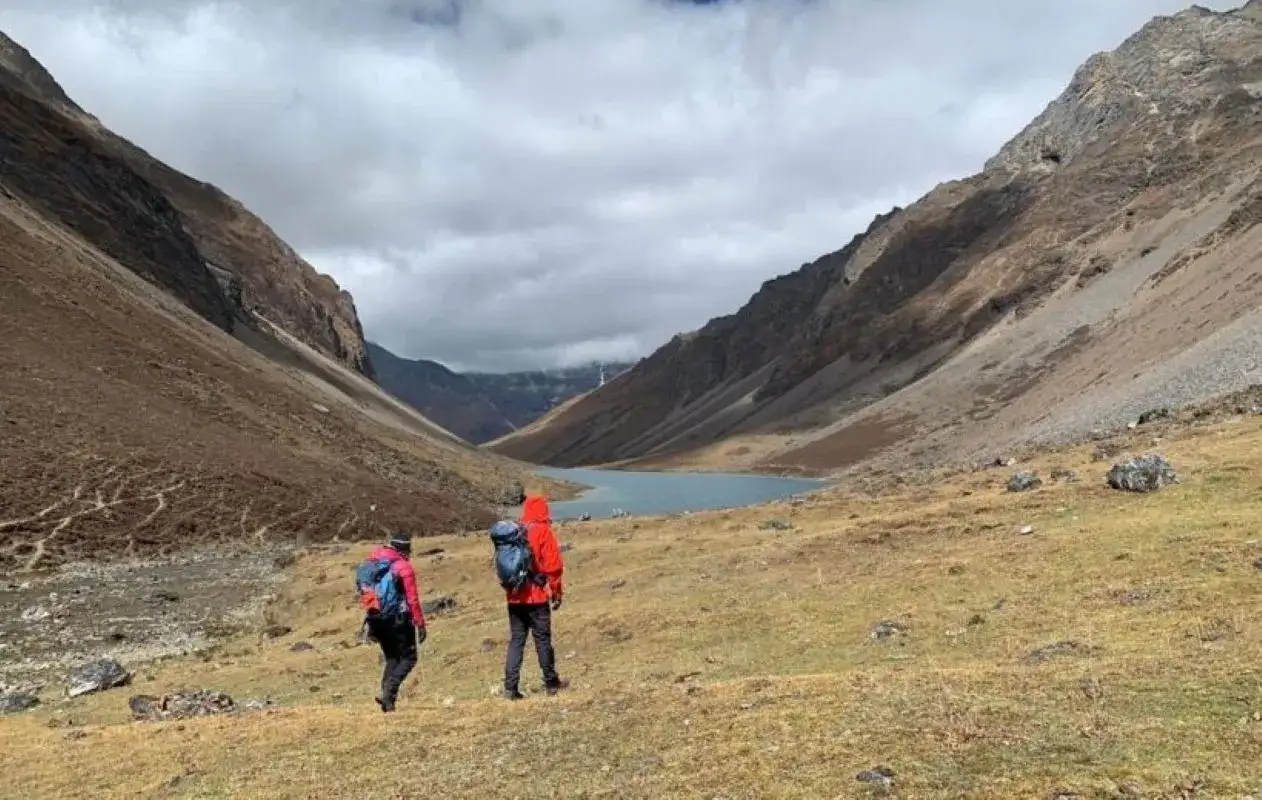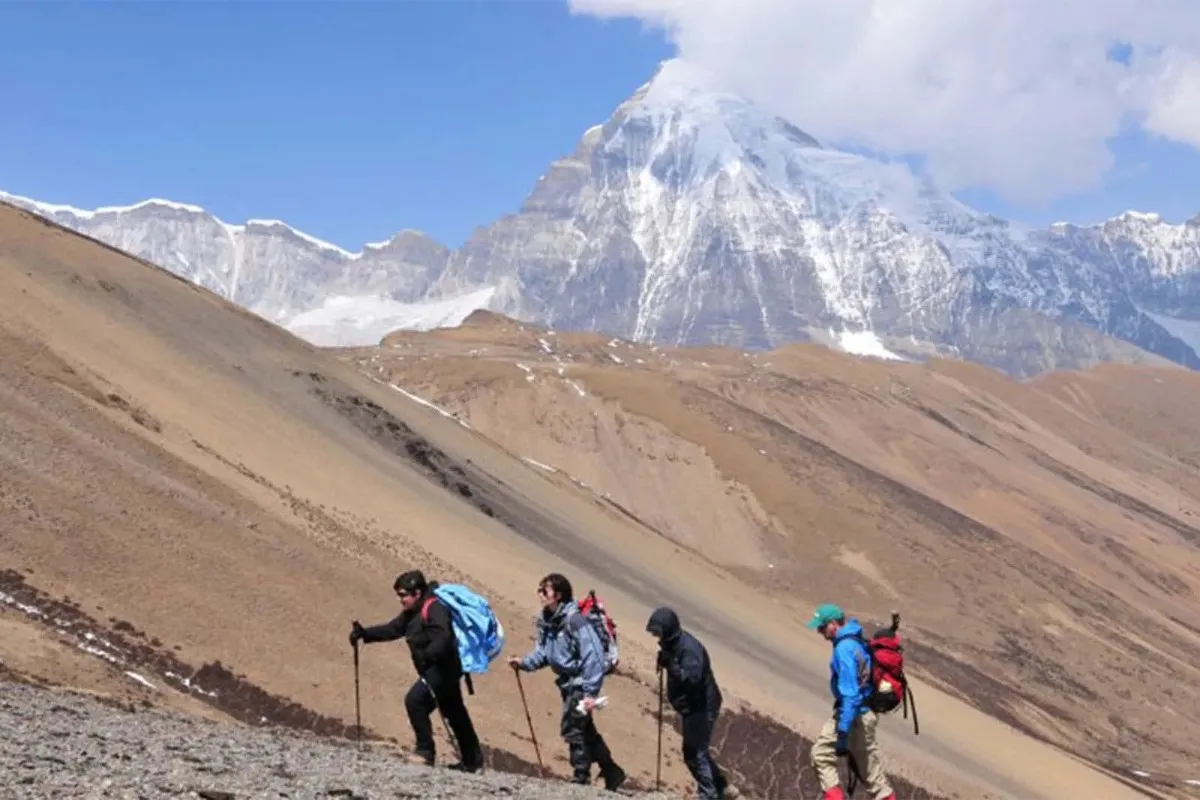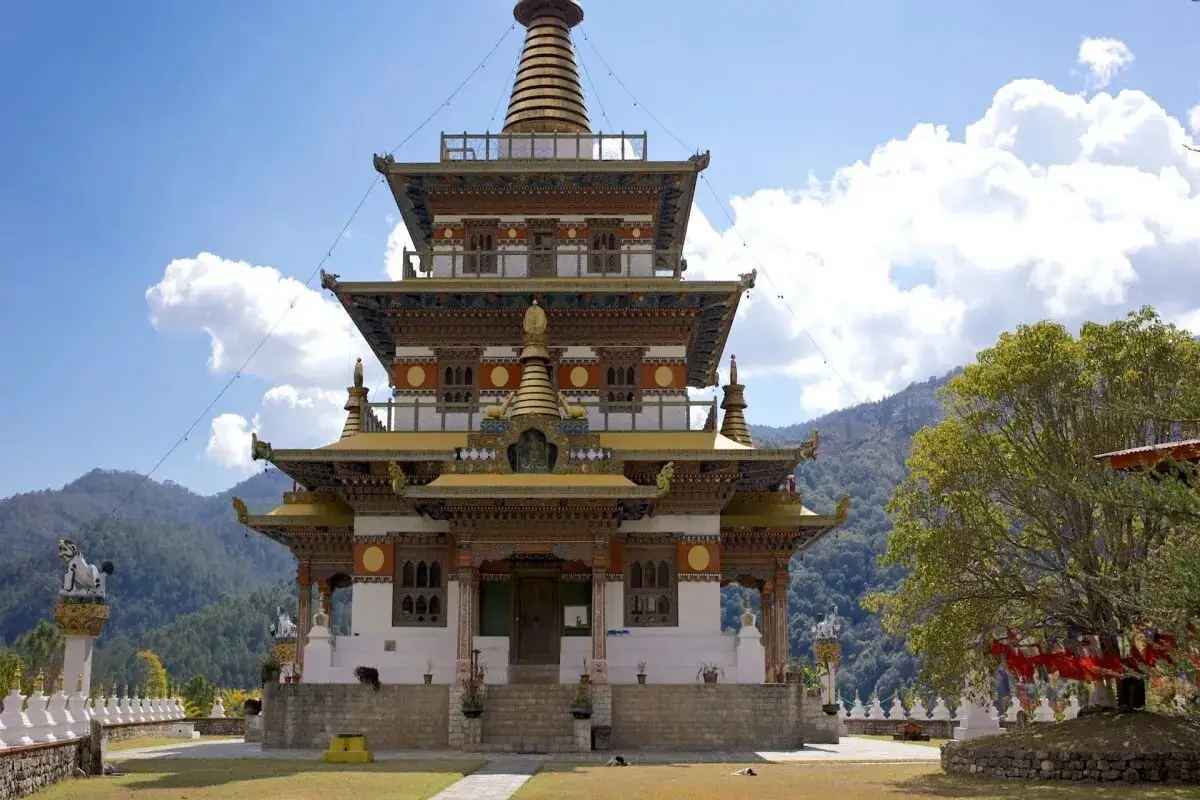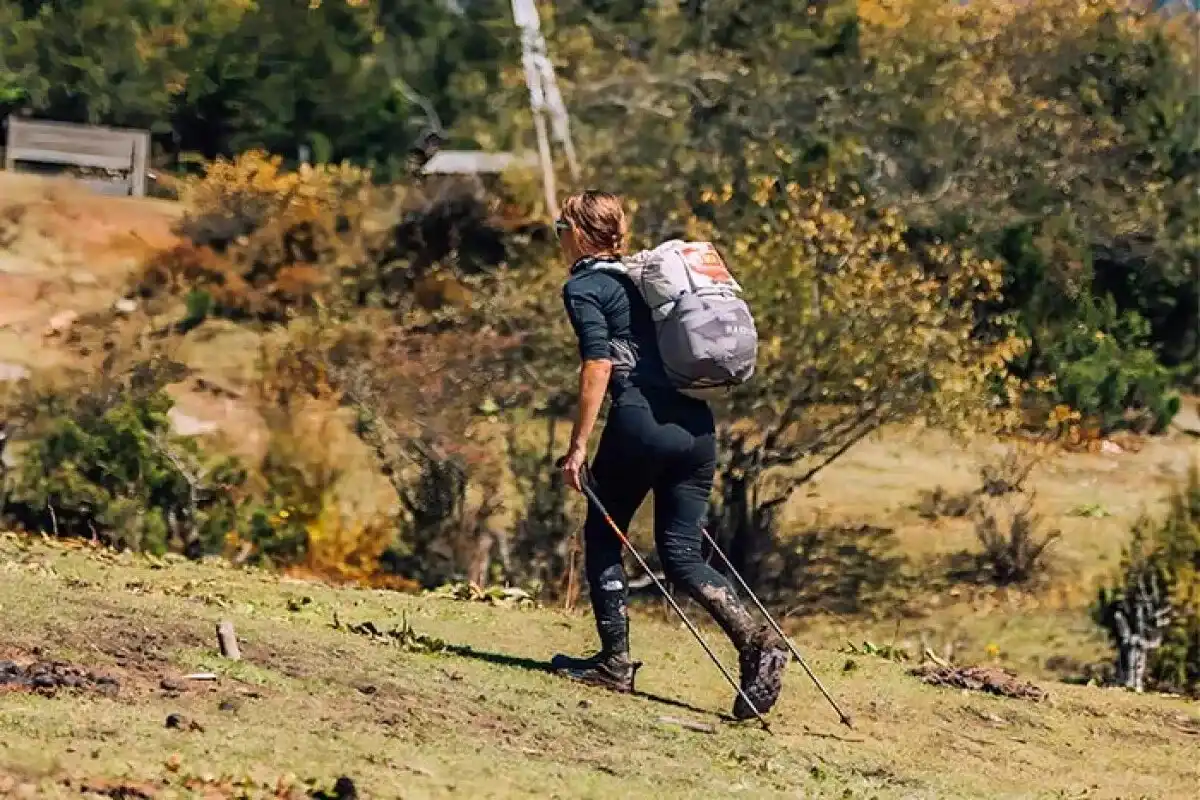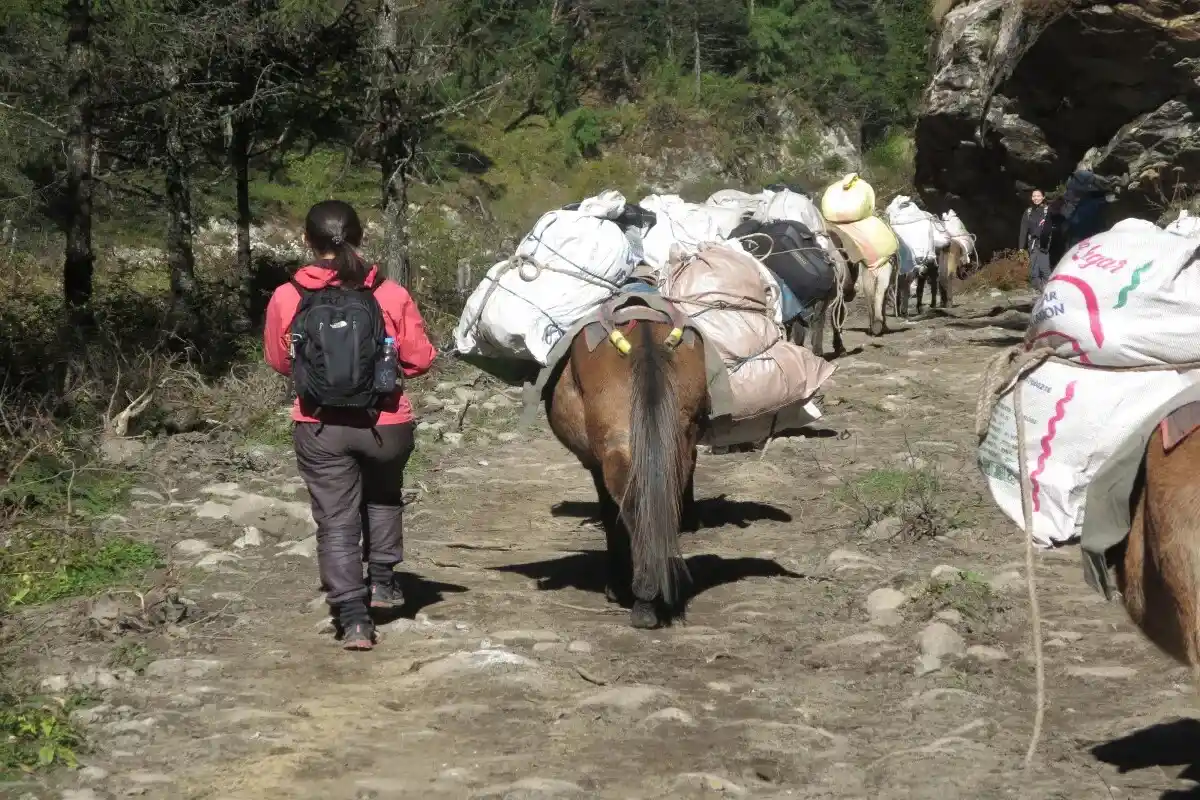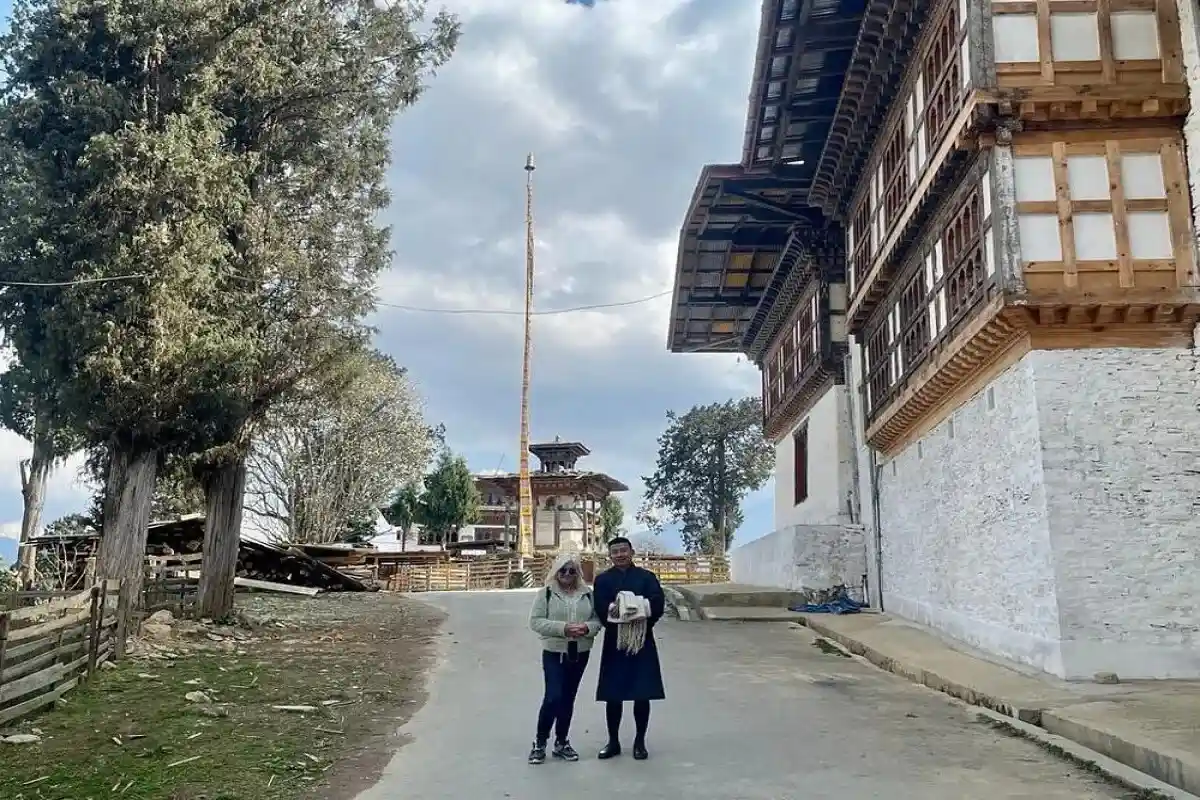Merak Sakteng Trek - 7 Days
The Merak Sakteng Trek is a 7-day adventure into the two villages of Bhutan that are remote but are also the most culturally rich ones, i.e., Merak and Sakteng. These villages that are located in the far eastern hills are the home of the Brokpa community, who are very unique as they are known for their ancient customs, yak herding lifestyle, and colorful dress.
Highlights of the tour
- Interacting with the Brokpa People
- Experiencing the Bhutanese culture
- Travelling Through Scenic Trails Between the Hidden Villages
- Hiking Through One of Bhutan’s Richest Biodiversity Zones
Trip Overview
This trek is one of the best trekking tours that gives a special chance to enjoy and see the spectacular beauty of nature, meet with the friendliest local people, and learn about the way of living of the local people. The next seven days of this trek are going to be filled with the most spectacular views of mountains, the pristine and beautiful forests, the birds, and the most memorable cultural experience.
Highlights of the Merak Sakteng Trek
This trek seems to provide the ideal blend of culture, nature, and adventure - every day bringing you new things to see, the friendship of the locals, and a genuine Bhutanese experience.
Interacting with the Brokpa People
Meeting the Brokpa people during this trek remains one of the most incredible experiences. They are the native community who are not only quite unique in their lifestyle but also famous for their friendly hospitality. You can interact with them, observe their ancient yak-herding tradition, and get familiar with their distinct dress and customs. It is a true and touching experience, and you probably will never forget it.
Experiencing the Bhutanese culture
In the trek, you will be accommodated in warm traditional homes where you will be considered family members. You will get to enjoy healthy and tasty local meals cooked with love, spend your evenings listening to folk music, and learn from the stories that have been passed from one generation to another. Such an experience is practically impossible to come by nowadays, and it is the perfect way to get immersed in the culture rather than watching it from afar.
Travelling Through Scenic Trails Between the Hidden Villages
As you wander along the winding paths that link Merak and Sakteng, your eyes will be delighted and amazed time and again with the endless natural beauty that comes your way - grassy valleys, ancient forests, and snow-capped mountains. The villages located in the far eastern part of Bhutan are not only very different from the other parts of the world but also quite incomparable. The trip is equally amazing as the destination you are going to find.
Hiking Through One of Bhutan’s Richest Biodiversity Zones
A trip to Sakteng Wildlife Sanctuary, the most diverse ecological region of Bhutan, really leaves you spellbound. On your trek, you will pass through the alpine meadows and the dense forests. Apart from that, you might also spot some rare birds and plants at the high passes. What's even more, you could have a sight of some of the rare creatures also. Hence, the lovers of nature will find this section of the trek very fascinating.
Why the Merak Sakteng Trail Is Bhutan’s Hidden Gem of Wilderness and Culture?
Merak-Sakteng Trail is the secret treasure of Bhutan that allows you to discover the preserved nature and a culture that is barely known to the people. It is far away from the common trails of tourists, so it gives you a chance to visit the hidden Brokpa villages where people are still following their traditions and are living in peace and mutual understanding. The scenery is quite spectacular and pristine - the whole area is made up of forests, rivers, and mountains. Along the trail, you will meet some of the nicest people, receive simple but great hospitality, and get to know Bhutan in its most genuine and peaceful form.
Why is the Brokpa culture considered one of Bhutan’s last living traditions?
Brokpa culture represents one of the last living traditional cultures of Bhutan, as it has maintained an entirely unique lifestyle for hundreds of years. It is not only that they herd yaks in the traditional way, but also that they live according to the seasons and in a way that is environmentally sustainable. Moreover, they speak their own language, wear traditional clothes, and are different in terms of habits from other people in Bhutan. Their isolated area has been helpful in saving their civilization, thus it is a genuine and rare occurrence of the past heritage of Bhutan, which still exists nowadays.
Conclusion
Merak-Sakteng Trek is a journey that goes beyond just a trek in the Himalayas, but it is a dive into Bhutan's least disturbed and culturally rich lands. In the 7-day itinerary, you will come across secretive villages, meet the Brokpa community, and walk on trails that are barely known to other travelers. From the quietness of the forest to the warmth of the locals' houses, every step will present you with something different. Now, as the trip is over, you will engrave the images of hidden valleys, adorable faces, and the beauty of nature in your memory. Not only that this trek leave a mark on the ground, but it also makes a lasting impression on your heart.
This trek is one of the best trekking tours that gives a special chance to enjoy and see the spectacular beauty of nature, meet with the friendliest local people, and learn about the way of living of the local people. The next seven days of this trek are going to be filled with the most spectacular views of mountains, the pristine and beautiful forests, the birds, and the most memorable cultural experience.
Highlights of the Merak Sakteng Trek
This trek seems to provide the ideal blend of culture, nature, and adventure - every day bringing you new things to see, the friendship of the locals, and a genuine Bhutanese experience.
Interacting with the Brokpa People
Meeting the Brokpa people during this trek remains one of the most incredible experiences. They are the native community who are not only quite unique in their lifestyle but also famous for their friendly hospitality. You can interact with them, observe their ancient yak-herding tradition, and get familiar with their distinct dress and customs. It is a true and touching experience, and you probably will never forget it.
Experiencing the Bhutanese culture
In the trek, you will be accommodated in warm traditional homes where you will be considered family members. You will get to enjoy healthy and tasty local meals cooked with love, spend your evenings listening to folk music, and learn from the stories that have been passed from one generation to another. Such an experience is practically impossible to come by nowadays, and it is the perfect way to get immersed in the culture rather than watching it from afar.
Travelling Through Scenic Trails Between the Hidden Villages
As you wander along the winding paths that link Merak and Sakteng, your eyes will be delighted and amazed time and again with the endless natural beauty that comes your way - grassy valleys, ancient forests, and snow-capped mountains. The villages located in the far eastern part of Bhutan are not only very different from the other parts of the world but also quite incomparable. The trip is equally amazing as the destination you are going to find.
Hiking Through One of Bhutan’s Richest Biodiversity Zones
A trip to Sakteng Wildlife Sanctuary, the most diverse ecological region of Bhutan, really leaves you spellbound. On your trek, you will pass through the alpine meadows and the dense forests. Apart from that, you might also spot some rare birds and plants at the high passes. What's even more, you could have a sight of some of the rare creatures also. Hence, the lovers of nature will find this section of the trek very fascinating.
Why the Merak Sakteng Trail Is Bhutan’s Hidden Gem of Wilderness and Culture?
Merak-Sakteng Trail is the secret treasure of Bhutan that allows you to discover the preserved nature and a culture that is barely known to the people. It is far away from the common trails of tourists, so it gives you a chance to visit the hidden Brokpa villages where people are still following their traditions and are living in peace and mutual understanding. The scenery is quite spectacular and pristine - the whole area is made up of forests, rivers, and mountains. Along the trail, you will meet some of the nicest people, receive simple but great hospitality, and get to know Bhutan in its most genuine and peaceful form.
Why is the Brokpa culture considered one of Bhutan’s last living traditions?
Brokpa culture represents one of the last living traditional cultures of Bhutan, as it has maintained an entirely unique lifestyle for hundreds of years. It is not only that they herd yaks in the traditional way, but also that they live according to the seasons and in a way that is environmentally sustainable. Moreover, they speak their own language, wear traditional clothes, and are different in terms of habits from other people in Bhutan. Their isolated area has been helpful in saving their civilization, thus it is a genuine and rare occurrence of the past heritage of Bhutan, which still exists nowadays.
Conclusion
Merak-Sakteng Trek is a journey that goes beyond just a trek in the Himalayas, but it is a dive into Bhutan's least disturbed and culturally rich lands. In the 7-day itinerary, you will come across secretive villages, meet the Brokpa community, and walk on trails that are barely known to other travelers. From the quietness of the forest to the warmth of the locals' houses, every step will present you with something different. Now, as the trip is over, you will engrave the images of hidden valleys, adorable faces, and the beauty of nature in your memory. Not only that this trek leave a mark on the ground, but it also makes a lasting impression on your heart.
Short Itinerary
Arrive in Paro and fly to Trashigang, relax at the hotel and take an optional evening village walk.
Drive and trek to Merak village, explore the unique Brokpa culture and scenic surroundings.
Trek from Merak to Sakteng through forests, meadows, and highlands with stunning natural views.
Explore Sakteng village, meet Brokpa locals, enjoy cultural immersion and nearby nature walks.
Trek to Joenkhar Teng through forests, rivers, and green hills with a peaceful atmosphere.
Trek to Phongmey and drive back to Trashigang, relax and enjoy your final evening in the east.
Fly to Paro, connect to your international flight with lasting memories of eastern Bhutan.
Merak Sakteng Trek Itinerary
After you land at Paro International Airport, there will be a guide to welcome you. Then, you will fly to Trashigang by a domestic flight, a place in the east of Bhutan. The beautiful and stunning flight is your great chance to admire the snowy Himalayan mountains from the air. A car will be waiting to take you to your hotel in Trashigang. After you have checked into your hotel, you can have some time of your own to enjoy and relax. In the evening, a little walk through the village neighboring the hotel can also be a choice. You can rest well at the hotel and be recharged for your journey the next morning.
You will start your day with an early breakfast, and you will take off from Trashigang to Merak. The duration and the nature of the trip will depend on the road and what you choose. The trip to Merak will be a scenic drive, then a short walk to the village. Upon reaching Merak the first thing you will notice is the unique environment of this isolated Brokpa village that is encircled with green hills and wide meadows. Walking through the village will be an amazing experience for you as you come across the inhabitants and learn about their way of living. At night, enjoy a restful overnight stay at Merak.
After breakfast, the journey to Sakteng via Merak will start. The trip that day will be about 6 to 7 hours. You will experience the forested trails, open meadows, and beautiful highlands during your trek. The trek is pretty tough; however, the amazing views and the quietness of the scenery are totally worth the effort. On the way, you'll meet yaks that graze on their pasture, spot the brightly colored prayer flags fluttering in the breeze, and get a taste of Mother Nature in her pure form. By the end of the day, you will arrive at Sakteng village, where you can rest and enjoy the evening in a traditional setting. The night will be spent at Sakteng.
Today, you get to enjoy a day that is totally unplanned and free in Sakteng village. It is an incredible chance to simply walk around and discover the pristine and stunning village lands at your own pace. You will be able to closely discover the unique culture and lifestyle of the Brokpa, the native people who have been living in this area for centuries. Take some time out of your day to walk along the narrow paths in and around the village. Meet the warm-hearted locals and learn about their traditional attire, homes, and other lifestyle aspects. If you want, you can take a short hike up to nearby hills for magnificent views or visit some other nearby places. This day will allow you to soak up the colorful culture of this lovely place. You will be spending another night in Sakteng.
After having a delicious breakfast, you will leave Sakteng and start your walk to Joenkhar Teng. The time of the walk is approximately 4 to 5 hours, and the level of difficulty is less than the previous days. During the trip, you will pass a forest area, lovely hills, and small rivers. It is a peaceful and nice trip where you can breathe the fresh air and please your eyes with the bright green surroundings. You can also spot some birds or animals on the way. In the evening, the small village of Joenkhar Teng will be your stop for taking rest, and a comfortable local house for a stay will be provided for you overnight.
After a good breakfast, you will be on your way for the last day of trekking from Joenkhar Teng to Trashigang, passing by Phongmey, a silent village. The walk will have you passing through wooded areas, gentle slopes, as well as open fields, and will also allow you to enjoy the beauty of nature in Bhutan one last time. The trek is of a moderate level and not very tiring, which makes it a nice farewell to the trip. A car will be on the road to pick you up and take you to Trashigang. After you drop off at your hotel, you may have a nice time resting and relaxing for the night. You will be staying in Trashigang overnight.
On your last day, you will be back in Paro by an early morning flight from Trashigang. Witness the beautiful nature of Bhutan one more time from the sky. After you have landed in Paro, your guide will help you board your next flight. If there is time, you may either rest for a short while at the airport or enjoy the mountain views for the last time. It is the conclusion of your trip through the valleys of eastern Bhutan, the villages, and the forests of the country, which remain unspoiled by the modern world. You will be leaving Bhutan with a heart filled with beautiful memories that will stay forever.
Know Before You Travel
-
Know why Brokpa culture considered one of Bhutan’s last living traditions:
Brokpa culture represents one of the last living traditional cultures of Bhutan, as it has maintained an entirely unique lifestyle for hundreds of years. It is not only that they herd yaks in the traditional way, but also that they live according to the seasons and in a way that is environmentally sustainable. Moreover, they speak their own language, wear traditional clothes, and are different in terms of habits from other people in Bhutan. Their isolated area has been helpful in saving their civilization, thus it is a genuine and rare occurrence of the past heritage of Bhutan, which still exists nowadays.
FAQs for Merak Sakteng Trek
The difficulty of the Merak–Sakteng Trek is from moderate to severe, with the duration of daily walks between 4 and 7 hours. The ascent from Merak to Sakteng is very steep; however, if you have some basic trekking experience, it won't be a problem for you.
The most elevated location on the Merak to Sakteng section is Naktshang La Pass, at an altitude of about 4,100 meters (13,450 feet).
You are most likely to experience an all-day, or even an all-trek connectivity-including no mobile network or internet connection between Merak and Sakteng. It gives you an excellent opportunity to unplug and immerse yourself in the tranquil surroundings.
Yes. These two villages belong to a culturally sensitive zone; thus, a special trekking permit is necessary, which we will organize for you in advance.
Definitely, you are going to meet the Brokpa people and stay in their villages. The trek is also a trip through the Brokpa's life of yak herding, dress, and peculiar practices, besides experiencing their way of life
You need a visa and all necessary permits for your trip. These documents can not be received on the day of your arrival, so they must be processed before coming here. After you book a trip with us, we will manage these papers for you. Your Bhutan visa is arranged by Orrog as part of the package.
The main way to come to Bhutan is through Paro International Airport, which is well-connected to cities like Bangkok, Delhi, Kathmandu, and Singapore. Most people arrive by air, but if you plan to come via road, you can enter through Phuentsholing, located on the southern border with India, which is the most commonly used entry point.
It is recommended to apply for the visa at least 20 days before your planned departure date so that there is enough time for processing your Bhutan visa, finalizing your itinerary, and arranging your guides and transportation. Although visa processing itself is relatively fast once payment is received, early preparation helps avoid delays and ensures availability, especially during peak seasons (spring and autumn).
You don’t require a passport-size photo for the visa, but it is wise to carry at least 2–4 recent passport-sized photographs during your trip. These may be needed for local permits, registration, or when applying for a local SIM card upon arrival in Bhutan.
Yes, you can lengthen your stay in Bhutan either before or after your trip. Bhutan’s tourism model requires visitors to pay a Sustainable Development Fee (SDF) and a daily package cost, so any extra days will involve additional charges. Extensions are a great opportunity to explore cultural sites in Paro, Thimphu, or even add another short trip or day hike.
Yes, Bhutan requires full tour payment in advance before your visa can be processed and issued. The government of Bhutan regulates this policy to ensure that all travel arrangements are confirmed through a licensed Bhutanese tour operator. We are a licensed tour operator that ensures you have everything you need for a trouble-free trip.
Any personal expenses are not covered in the package like:
- Tips for your guide and other staff
- Bottled drinks and snacks(personal expense)
- Souvenirs or local crafts
Credit cards are easily accepted in major cities like Paro and Thimphu. But in remote areas, you may not have access to a card or an ATM. So, it is best to carry some cash before heading for the trip.
Tipping is not mandatory, but it is a widely appreciated gesture and a customary way to show gratitude for good service. The tipping guideline would be to give USD 5-10 per day as a tip for the guides and other staff.
Paro International Airport is the only international airport in Bhutan. It is well connected by flights from cities like Bangkok, Delhi, Kathmandu, and Singapore.
Yes, airport pick-up and drop-off are included in the package. We will have your guide and driver meet you at the airport and transport you to your hotel.
While Bhutan's roads are mostly paved, some parts are narrow, winding, and occasionally affected by weather. However, we ensure your travel is safe, well-maintained, and driven by an experienced professional throughout the journey.
The Bhutanese Ngultrum is used in Bhutan. All local transactions during the trip will be in BTN.
US Dollars (USD) are generally accepted at larger hotels, souvenir shops, and tour operators, particularly in Paro and Thimphu. However, it’s advisable to convert your currency to BTN for general purchases in rural areas. Other currencies like the Euro or the Pound are not commonly accepted directly.
No, credit or debit cards are not accepted on the trip, as it takes you through remote regions with no banking or electronic payment access. All trip-related payments like accommodation, meals, permits, etc, are paid in advance.
You can exchange foreign currency at the Paro International Airport, at banks, or through licensed money changers in cities like Thimphu and Paro. It's best to exchange enough cash before heading out on the trip.
The national language is Dzongkha, but many Bhutanese also speak English. If you speak English and are worried about communicating with the local people, you will have your guide as a translator.
Yes, all licensed tour guides in Bhutan are required to speak fluent English. Many are also trained in other languages such as German, Japanese, or French. Communication during the trip will be smooth and clear in English.
Most signboards, tourist maps, and information brochures are written in English, especially in tourist destinations like Paro, Thimphu, and trailheads. Directional signs along routes are often labeled in both Dzongkha and English.
No, learning Dzongkha is not at all needed for the trip, but knowing a few basic words like "Kuzu zangpo la" (Hello) or "Kadrinche la" (Thank you) is a good way to interact with the locals.
Language barriers are minimal, as your guide will handle all communication with locals and support staff. Your guide will translate for you during your interaction with the locals.
To greet people, you can greet with locals “Kuzu zangpo la” (Hello) by performing a slight bow. Most common greetings include physical greetings, such as shaking hands less visible, especially in rural areas.
Yes, but remember to seek permission, especially when taking photos of monks, locals, or temples. Please note that clicking photos is not allowed at most religious sites.
Visitors should dress modestly and respectfully. This means:
- Covering shoulders and knees
- Removing hats and sunglasses
- Not wearing shorts or sleeveless tops
This applies to both men and women.
Yes, Bhutanese society is deeply rooted in Buddhism and tradition. Here are some key taboos:
- Do not point your feet at people or sacred objects
- Never touch anyone on the head, as it is considered sacred
- Walk clockwise around temples, stupas, and religious monuments
- Avoid public displays of affection
While gifts are not expected, they may be accepted graciously if given with respect. It is advisable to consult with the guide before giving out anything.
Bhutan typically uses Type C, Type D, and Type G electrical outlets. Standard safe voltage is 230V and frequency is 50Hz; therefore, ensure that your equipment is compatible with this voltage.
Indeed, it is highly advised to take along a universal travel adapter, particularly one to fit a variety of types of plugs, because plugs can be different in a hotel or a guesthouse.
No, it's not advisable to use power-consuming appliances like hairdryers during the trip due to very less access to electricity and the risk of overloading small power sources in rural lodges or camps.
Charging facilities are limited during the travel days, particularly once you leave Paro. It’s a good idea to bring a high-capacity power bank to keep essential electronics like cameras or phones powered.
Power supply in towns like Paro and Thimphu is generally stable, but occasional power cuts do happen, especially during storms or in rural areas. It's wise to charge your devices whenever electricity is available.
Bhutan follows Bhutan Time (BTT), which is UTC/GMT +6 hours. This time zone remains consistent throughout the year.
No, Bhutan does not observe daylight saving time. The country maintains the same time year-round.
Bhutan is 30 minutes ahead of India. For example, 12:00 PM in India is 12:30 PM in Bhutan
Yes, souvenirs can be bought in Paro or Thimphu before or after the trip.
Some popular souvenirs include hand-woven textiles (kira and gho fabric), prayer flags, thangka (religious scroll) paintings, handmade paper products, traditional masks, and Buddhist artifacts.
You can do some gentle bargaining in local street markets. However, in government-run shops and fixed-price stores, prices are usually non-negotiable.
Yes, you can easily purchase a SIM card upon arrival in Bhutan. We will assist you with the process, and you'll need a passport copy and a passport-sized photo.
No, internet access is not available during the trip. However, Wi-Fi is available in hotels in Paro and Thimphu before and after the trip.
Yes, it is highly recommended to inform friends and family before the trip that you will be offline for several days, so they are not concerned by the lack of communication.
B-Mobile (by Bhutan Telecom) and TashiCell are the two main service providers. B-Mobile tends to have better coverage in rural and mountainous areas
Yes, snow is quite likely, especially at higher elevations, which are above 4,800 meters. If you trek during late autumn (October–November) or early spring (March–April), you may encounter snowfall. During the peak of spring (April–May) and autumn (September–early October), trails are usually clear, although sudden weather changes in the mountains can still bring unexpected snow showers. You should always be prepared for cold conditions and potential snowfall, regardless of the season.
No, Treks are not accessible throughout the year. The trail is generally closed during the winter(December- February) due to heavy snowfall that makes high mountain passes impassable and increases the risk of avalanches and extreme cold.
Since the weather can be unpredictable and temperatures can vary drastically, layered clothing is essential. You should pack:
- Base layers (thermal tops and bottoms)
- Insulating layers like fleece or down jackets
- Waterproof and windproof outer layers
- Warm hats, gloves, and neck gaiters for freezing conditions
- Moisture-wicking socks and weatherproof trekking boots
The weather is clear with mild daytime temperatures during spring and autumn. But you will be travelling in high altitudes, so it is necessary to carry enough clothing because you will encounter lower temperatures. The nights are freezing cold at high altitudes. So, pack accordingly.
This trip is mainly for people aged between 12 and 65. But if you are physically fit and have the willpower to complete this trek, you can complete this trek because we will be there to help you in case of any problem.
A Medical certificate is not mandatory, but a health check-up is advised. Since the trek reaches altitudes over 4,800 meters (15,750 feet), you can have a normal checkup before the trek to make sure that you have no ongoing issues.
Yes, your children can join the trek if they are in good physical condition, which requires walking for a few hours every day. They should have parental guidance during the trek.
Yes, senior citizens can participate, given that they are fit to complete this trek. A visit to the Doctor is strongly advised, and seniors should engage in pre-trek training to improve stamina and cardiovascular health.
During this Trek, you will stay in tented camps at remote, scenic campsites along the trail. These camps are fully supported and managed by us. Before and after the trek, you will stay in comfortable hotels or guesthouses in Paro and Thimphu. All accommodations are arranged by us as part of your package.
Yes, all campsites are carefully chosen, keeping safety, cleanliness, and hygiene in mind. Orrog follows strict sanitation practices, including setting up toilet tents, safe waste disposal, and clean food preparation areas. You’ll also be accompanied by well-trained staff to ensure your safety during the trip.
Yes, we provide a high-quality sleeping bag in the package, which is suitable for sub-zero temperatures of the high-altitude regions. However, you can bring your sleeping bag if you prefer additional comfort or hygiene.
Yes, hot water for drinking is available at camps, but not hot water for showers. You can carry biodegradable wet wipes for convenience.
Each campsite is equipped with portable toilet tents or simple pit latrines, maintained by the support team to ensure cleanliness and privacy. While they are basic, they are safe, hygienic, and environmentally conscious. It is advisable to carry your toilet paper, hand sanitizer, and eco-friendly toiletries to maintain hygiene during the trek.
If you experience symptoms such as headache, nausea, dizziness, or fatigue, your guide will have you rest, hydrate, and monitor your condition closely. If symptoms worsen, you will be taken to a lower altitude immediately, which is the most effective treatment. All treks are designed with gradual altitude gain and acclimatization days to minimize the risk.
Yes, emergency helicopter evacuation is available in Bhutan and can be arranged in serious cases such as severe altitude sickness or injury. However, helicopter rescue is costly and not included in standard trek packages, so having travel insurance that covers emergency evacuation is mandatory. Guides and tour operators are trained to handle emergencies efficiently and will contact authorities for evacuation if needed.
This trek is moderate to tough with 6–8 hours of walking per day across rugged terrain and steep trails. The altitude, length, and remote conditions require good physical fitness and preparation.
Yes, emergency helicopter evacuation is available in Bhutan and can be arranged in serious cases such as severe altitude sickness or injury. However, helicopter rescue is costly and not included in standard trek packages, so having travel insurance that covers emergency evacuation is mandatory. Guides and tour operators are trained to handle emergencies efficiently and will contact authorities for evacuation if needed.
Yes, travel insurance is mandatory for all international travelers visiting Bhutan, especially for those trekking at high altitudes. Your insurance must cover:
- Emergency medical treatment
- High-altitude trekking (above 4,000 meters)
- Helicopter evacuation and return to the home country
- Trip cancellation or delay
Proof of insurance may be requested before your visa is processed. Make sure to read your policy details carefully or consult with your insurance provider before travel.
es, travel insurance is mandatory for this trek. Your policy must include coverage for high-altitude trekking (above 4,000 meters), medical emergencies, and helicopter evacuation, as these services can be very costly in remote Bhutanese terrain. Proof of insurance may be required by your tour operator before confirming the trek.
Mobile network coverage is extremely limited along the Trek. While you may get occasional signal in some lower-altitude areas or villages, most of the trail is out of range, especially near the high passes and campsites. It’s best to inform family and friends that you may be offline for several days.
Charging facilities are not available on the trail since the trek passes through remote and non-electrified areas. It is strongly recommended to bring a high-capacity power bank or a solar charger to power essential devices like phones or cameras during the journey.
Yes, you should bring personal gear such as trekking boots, warm and waterproof clothing, gloves, hats, and a sleeping bag. The other necessary items will be managed by us.
Meals are prepared fresh daily by the trek support team and typically include Bhutanese and Tibetan-style dishes like rice, curries, noodles, soups, vegetables, and occasional meat. Tea, coffee, and snacks are also provided. If you have diet restrictions (vegetarian, vegan, gluten-free, etc.), inform your tour operator in advance so arrangements can be made.
Trekking in Bhutan follows strict environmental protocols, including the “Leave No Trace” principle. All trash is collected and carried out by the support team. Trekkers are expected to avoid littering and carry personal non-biodegradable waste, such as snack wrappers or batteries, back to base.
Yes, safe drinking water is provided each day. You are also encouraged to bring a refillable water bottle and, optionally, water purification tablets or a filtration bottle for additional safety and convenience.
You can prevent Altitude sickness by following these tips:
- Ascend gradually and allow time for acclimatization
- Drink plenty of fluids, preferably water and warm drinks
- Avoid alcohol and caffeine
- Eat light but frequent meals
- Communicate with your guide immediately if you feel unwell
Common symptoms include:
- Headache
- Nausea or vomiting
- Dizziness or light-headedness
- Shortness of breath
- Loss of appetite
- Fatigue or difficulty sleeping
Reviews & Ratings
-
Guarantee -
Thimphu,Bhutan -
975+17160228
Ready to Explore Bhutan?
Start your journey today and discover the magic of Bhutan with our expert guides and carefully crafted tours.
Book This Trip
-
No booking or credit card fees -
Best price guarantee -
Full customize trip
Ask a Question
Feel free to ask us anything about this tour. A travel expert will then get back to you as soon as possible
Ready to Explore Bhutan?
Start your journey today and discover the magic of Bhutan with our expert guides and carefully crafted tours.

